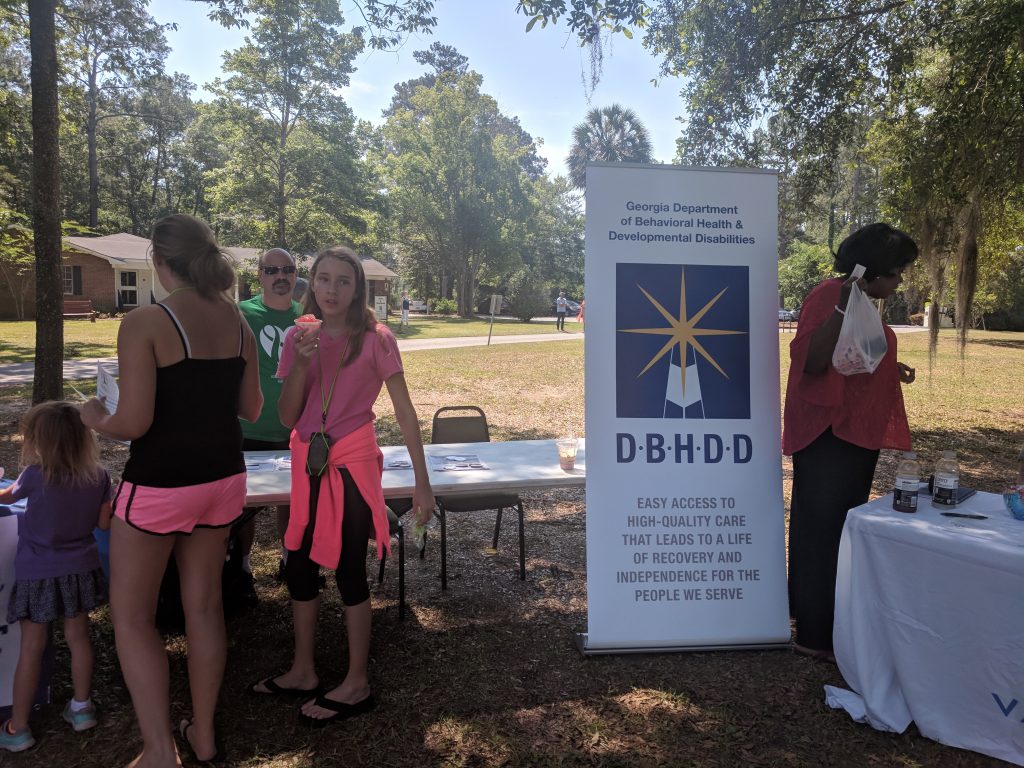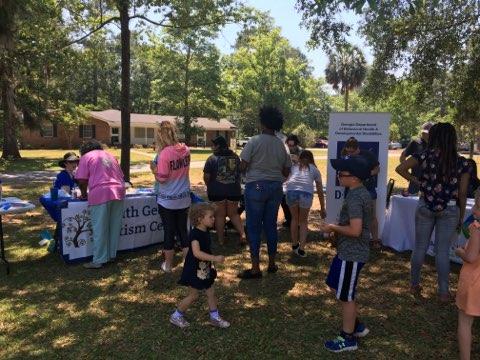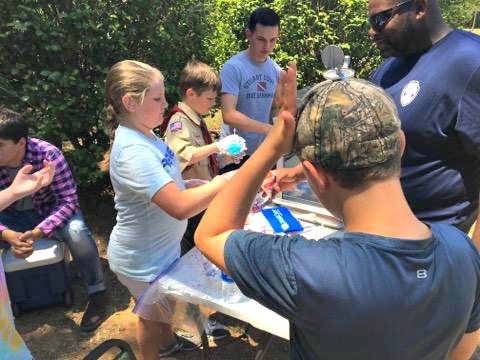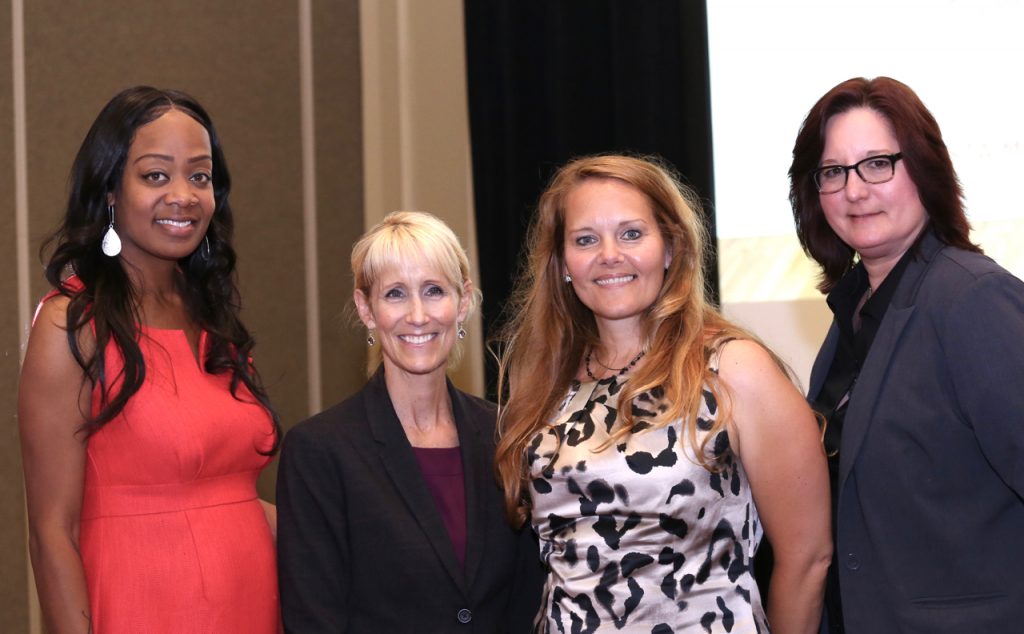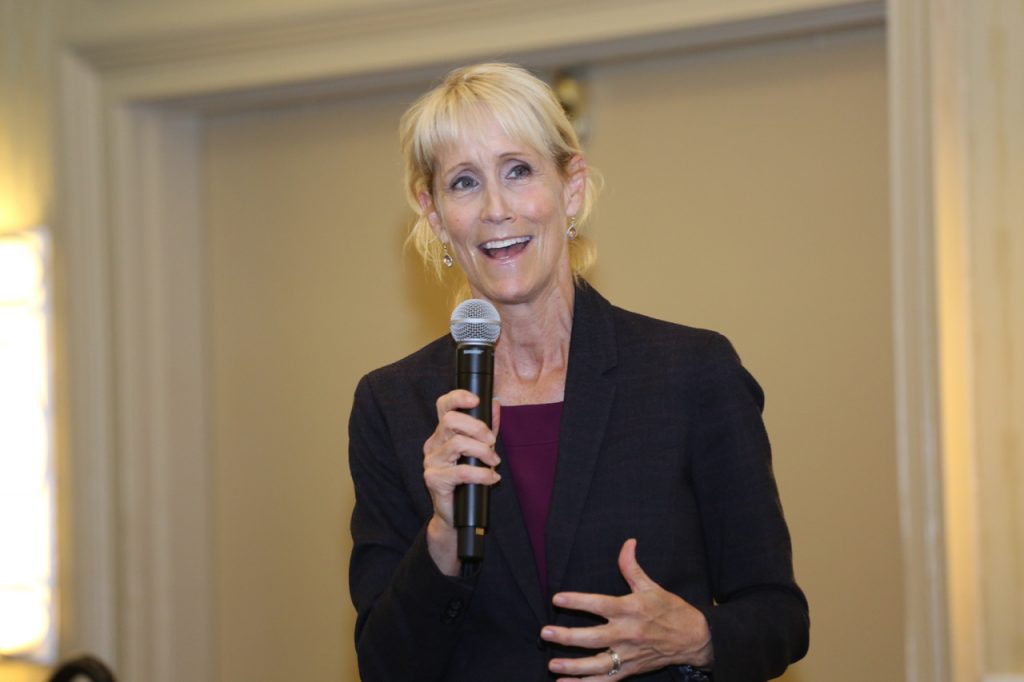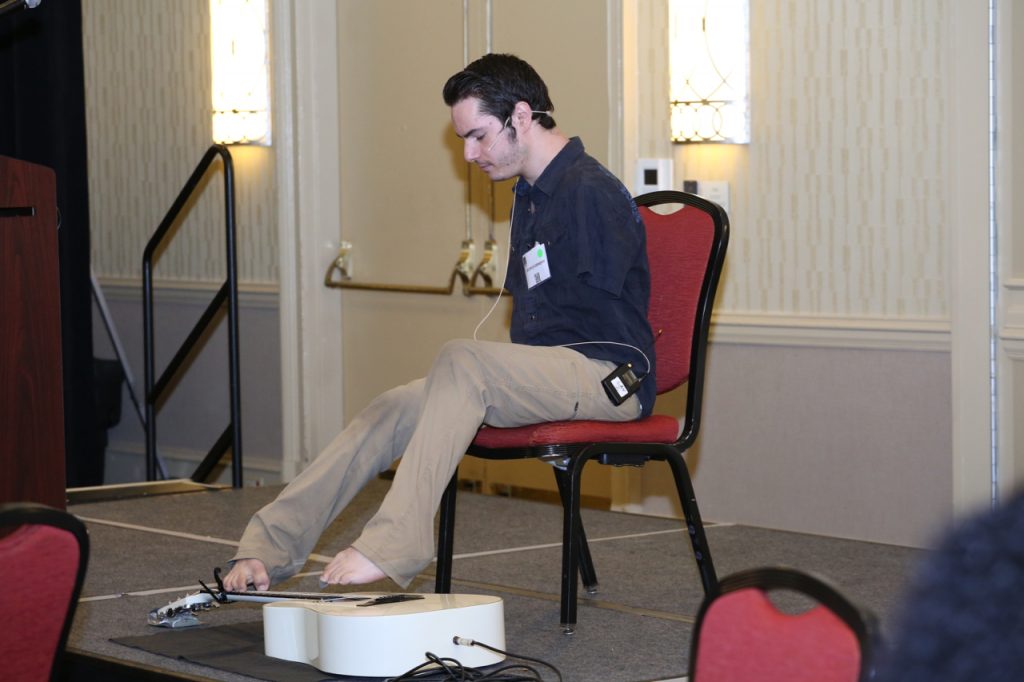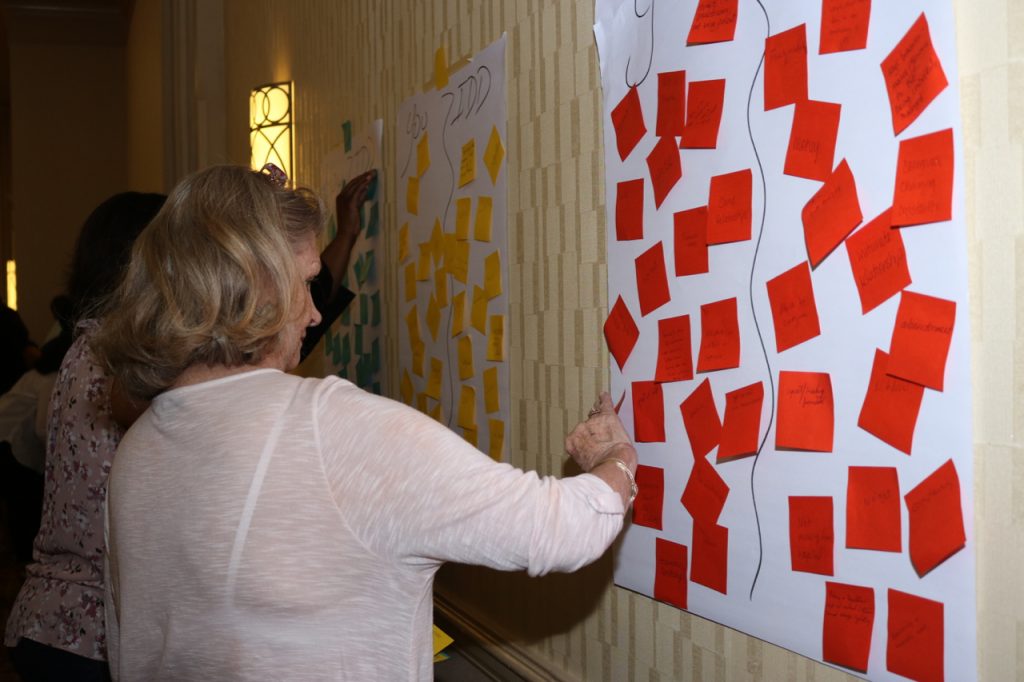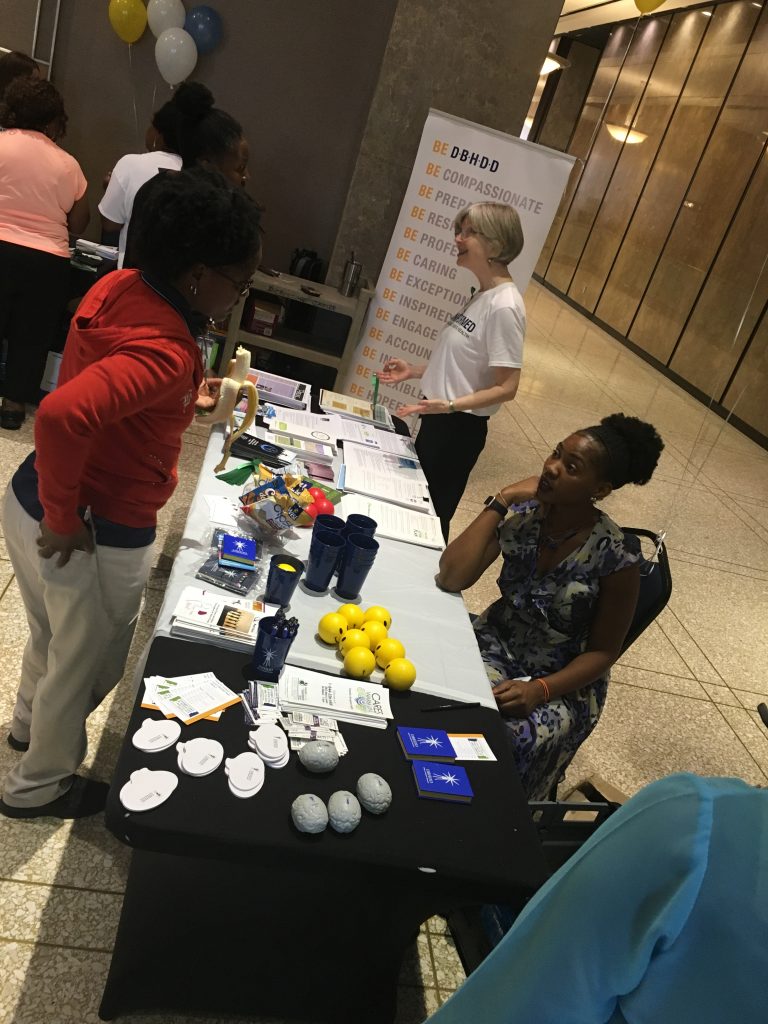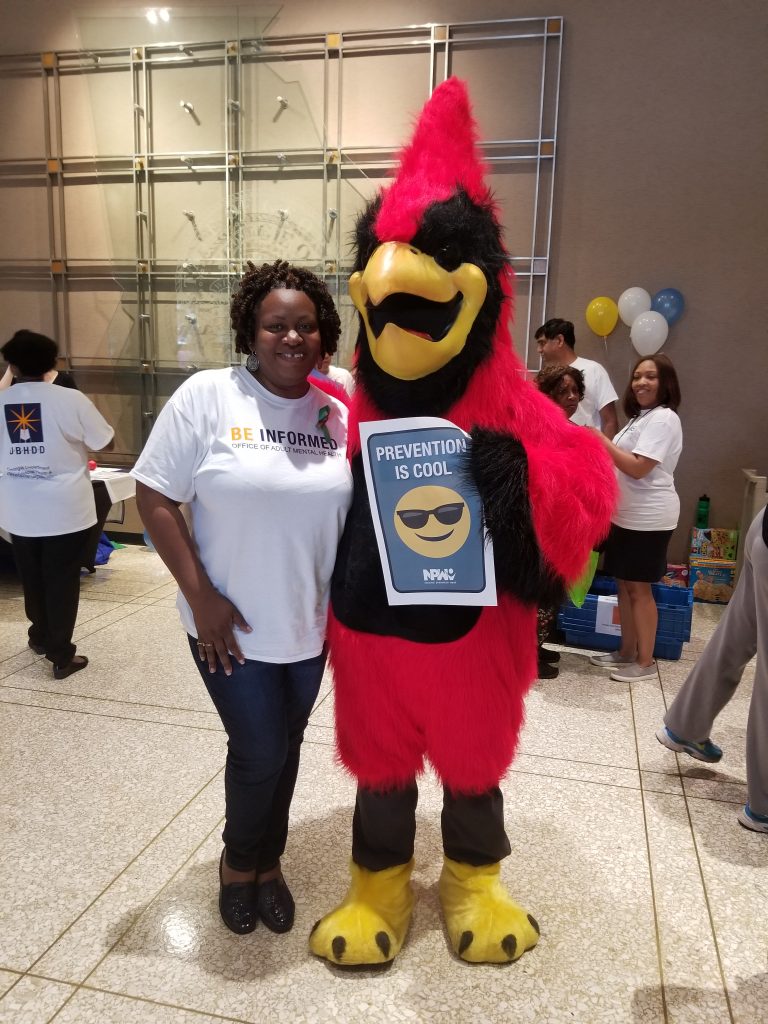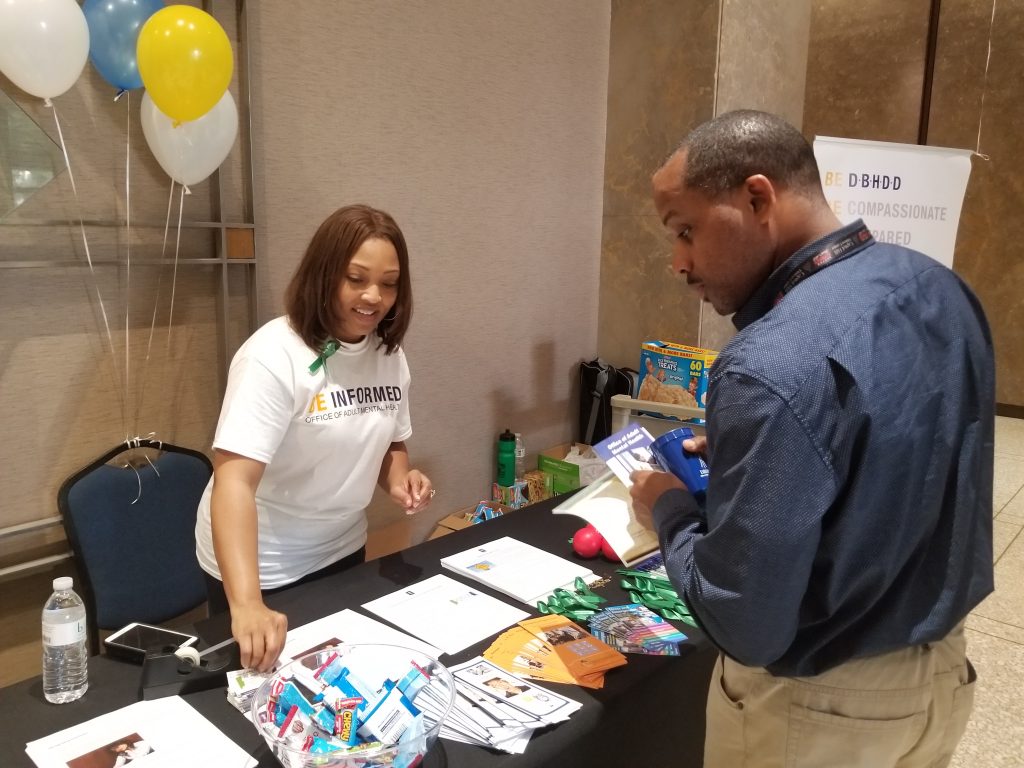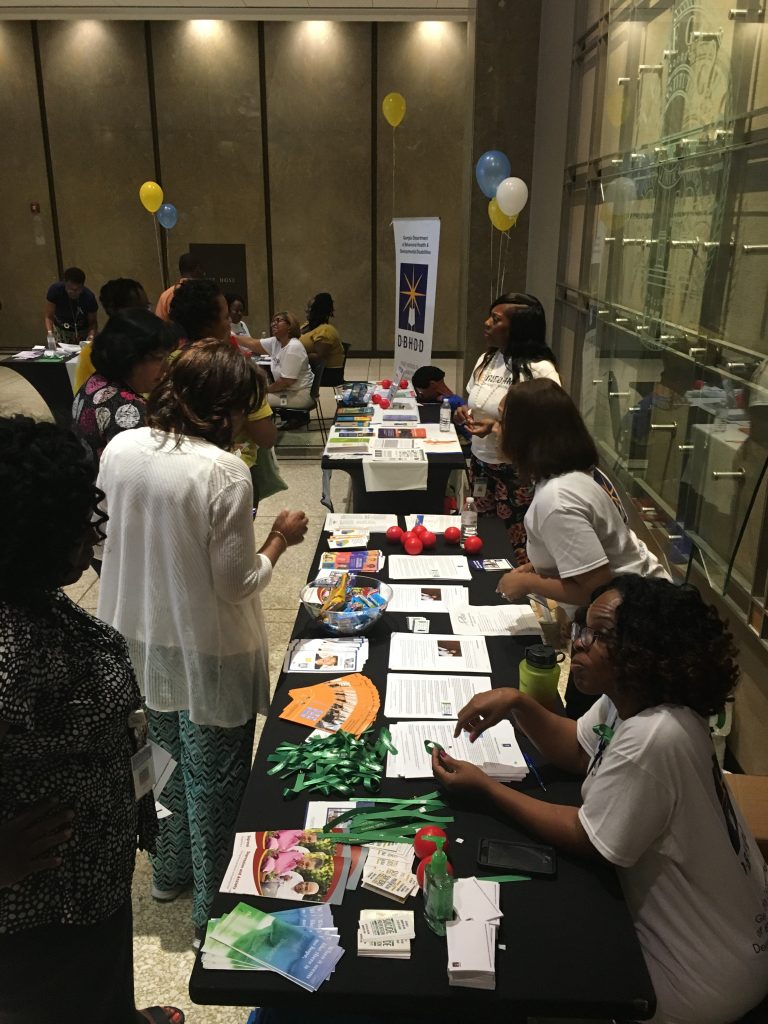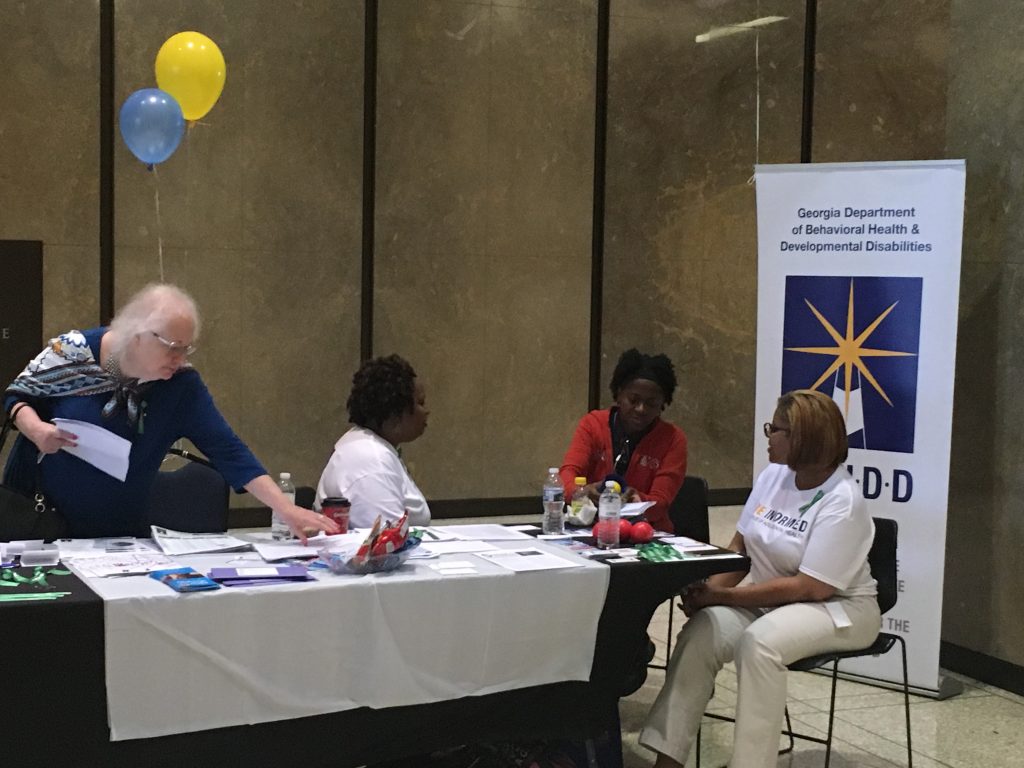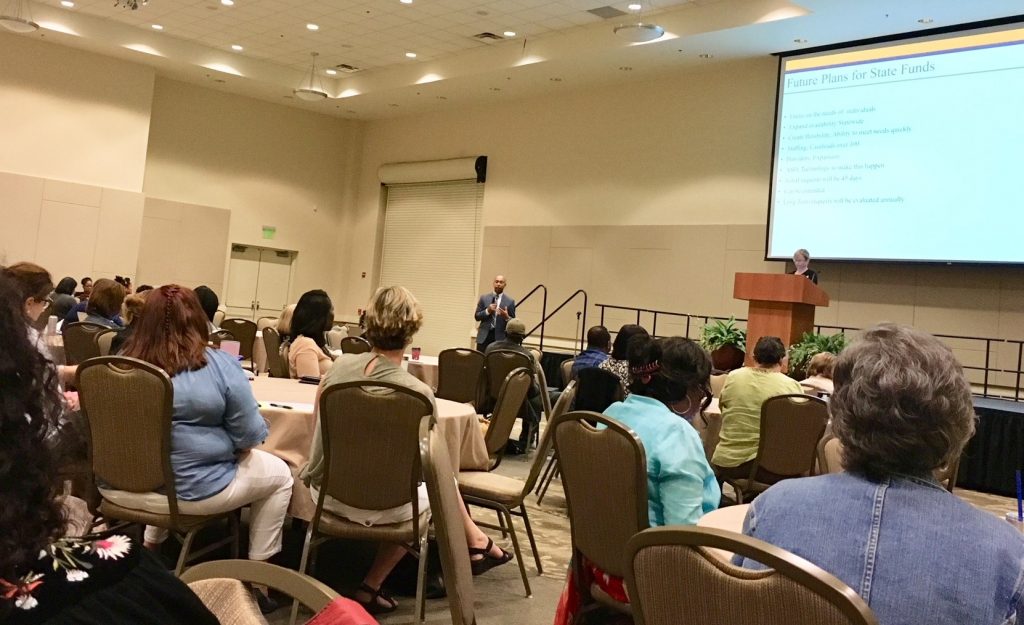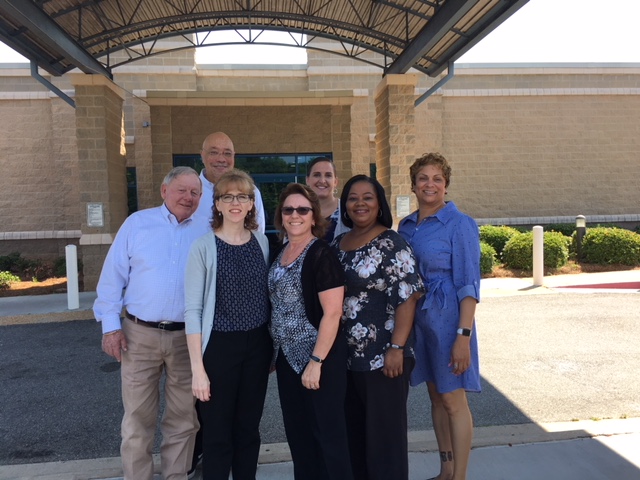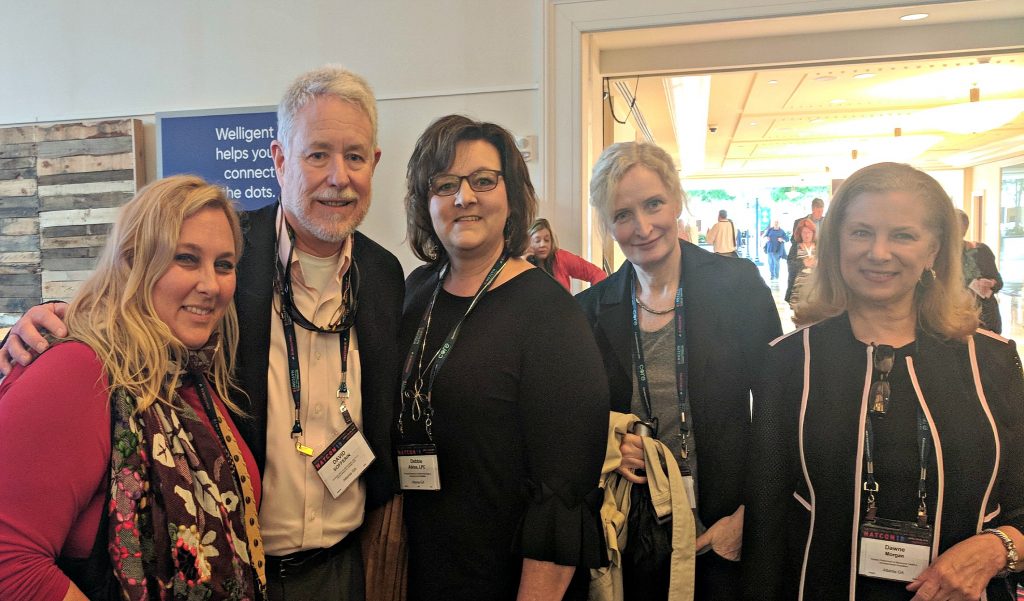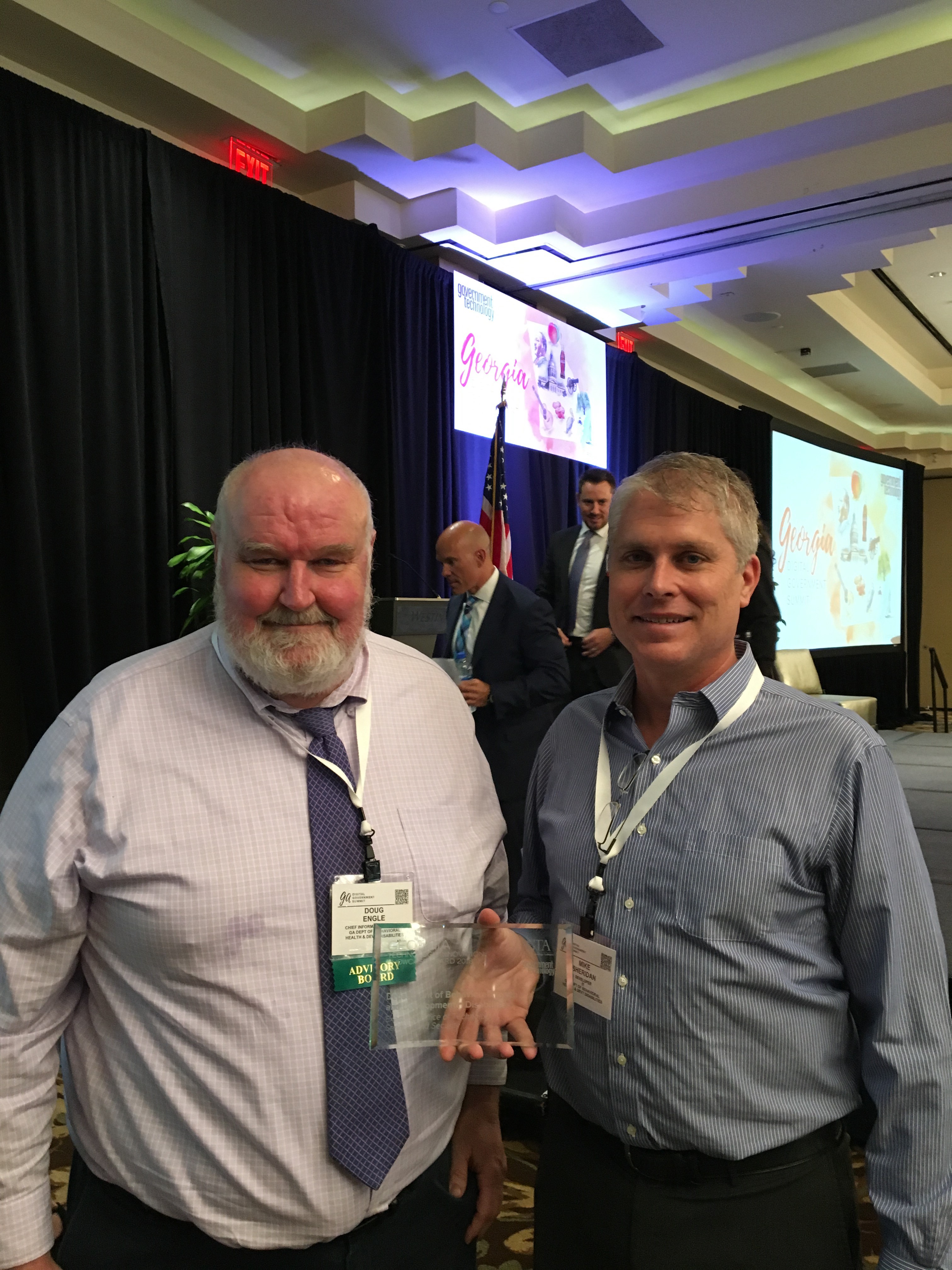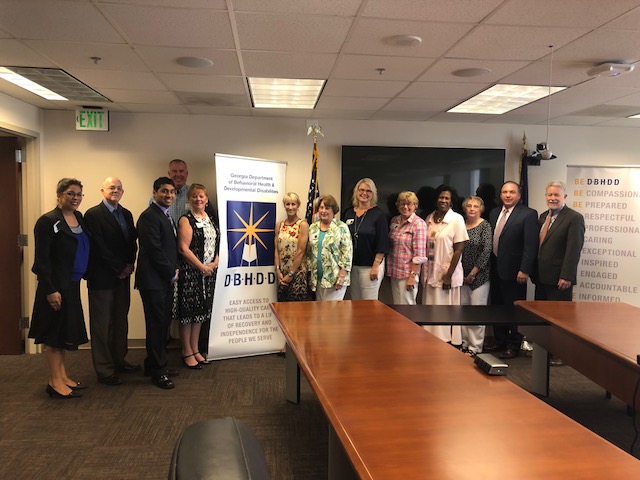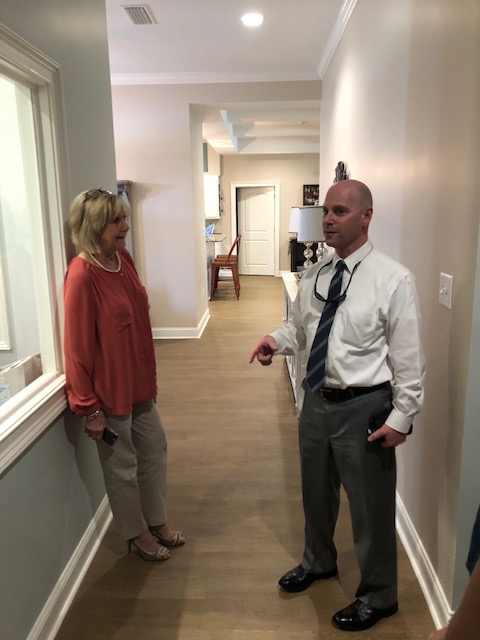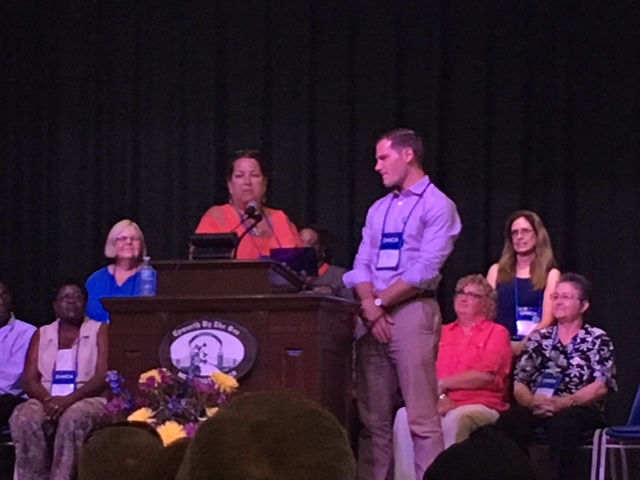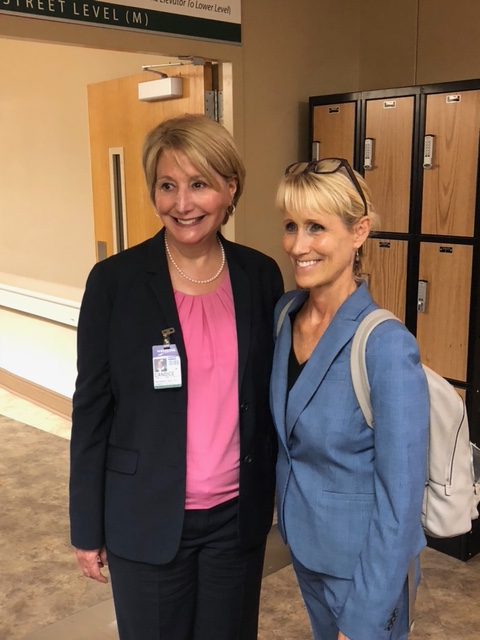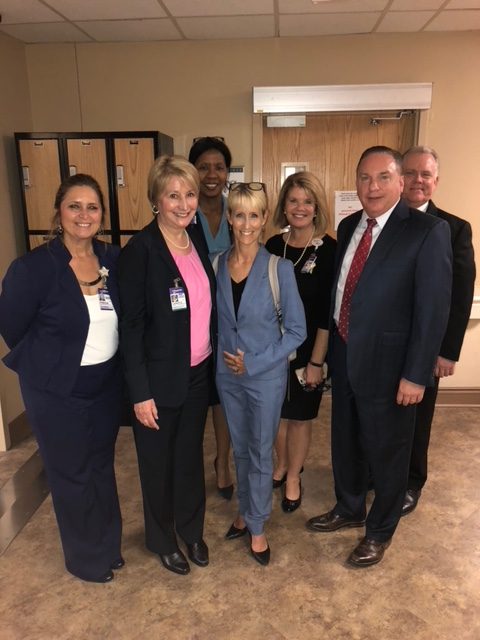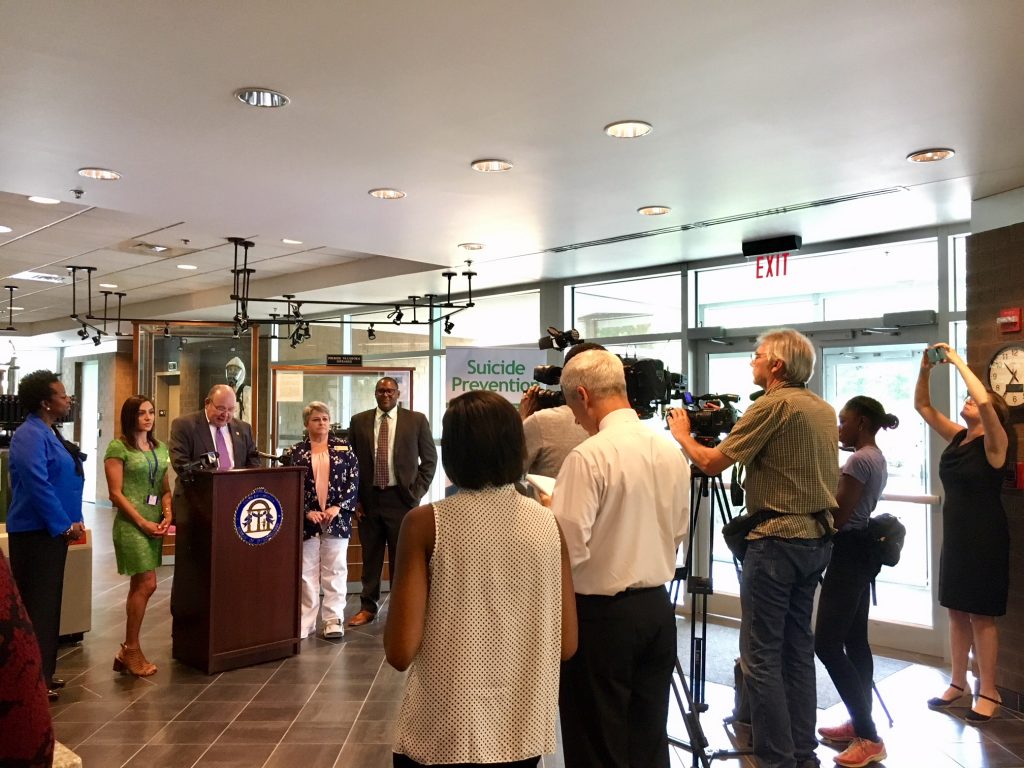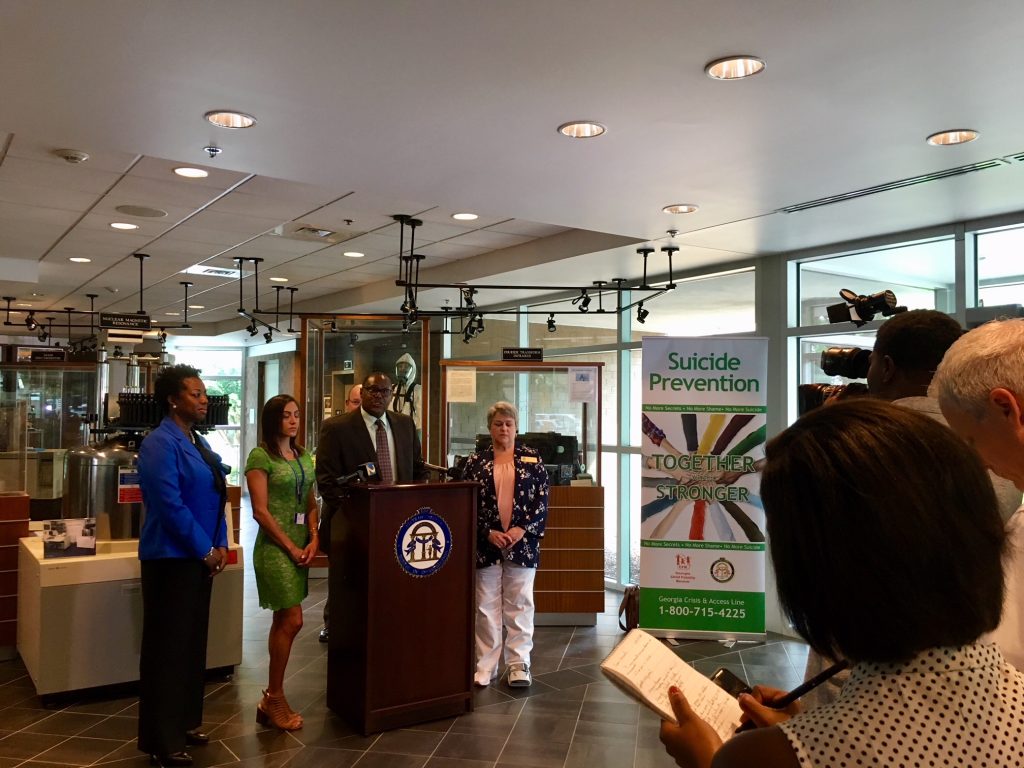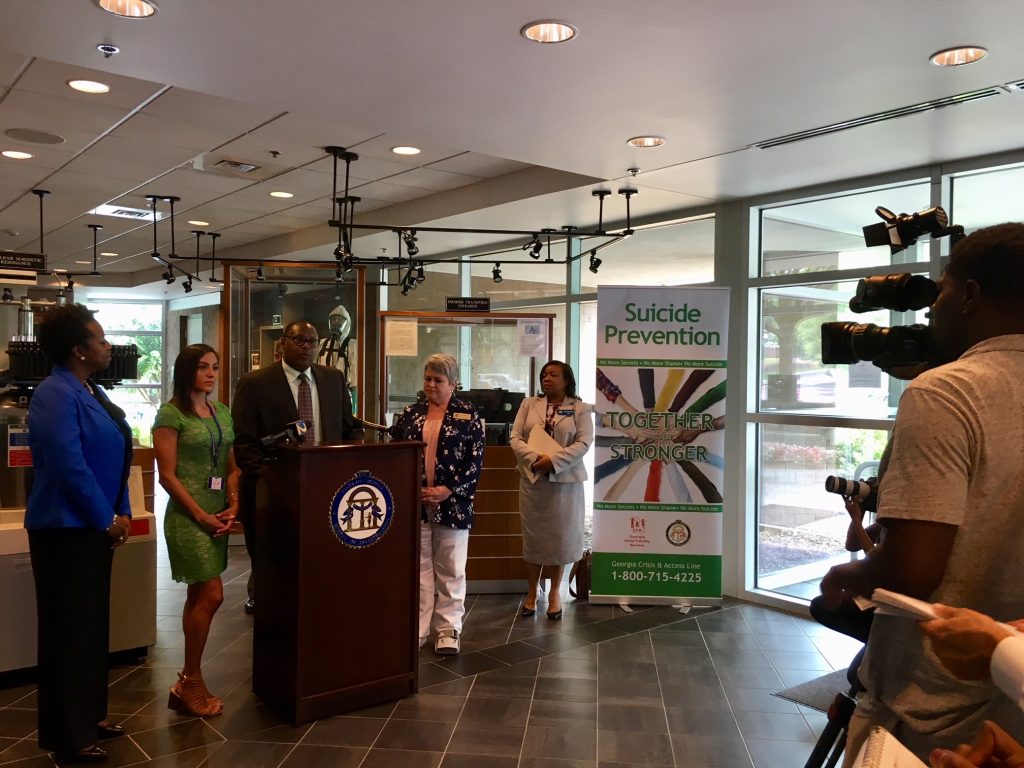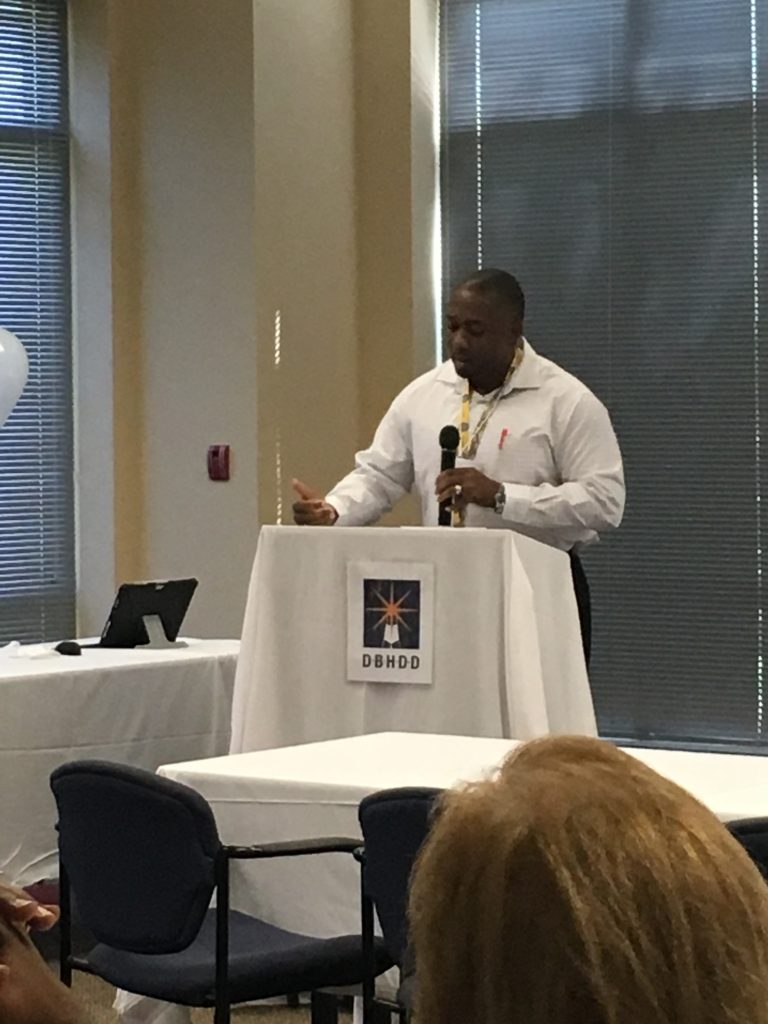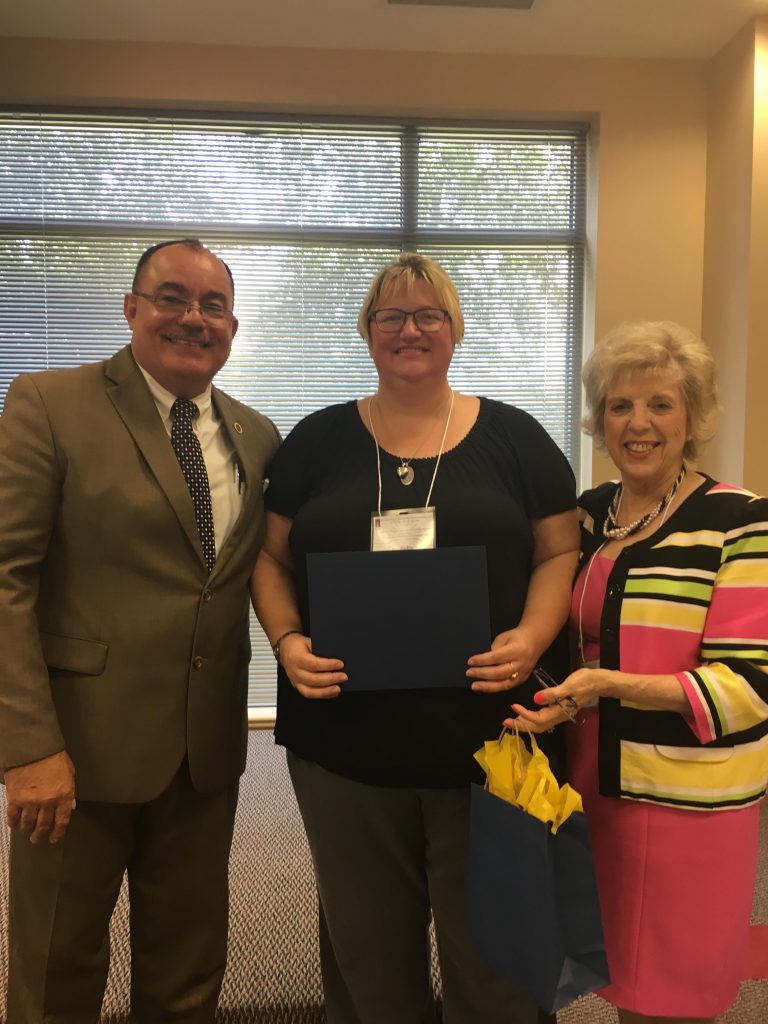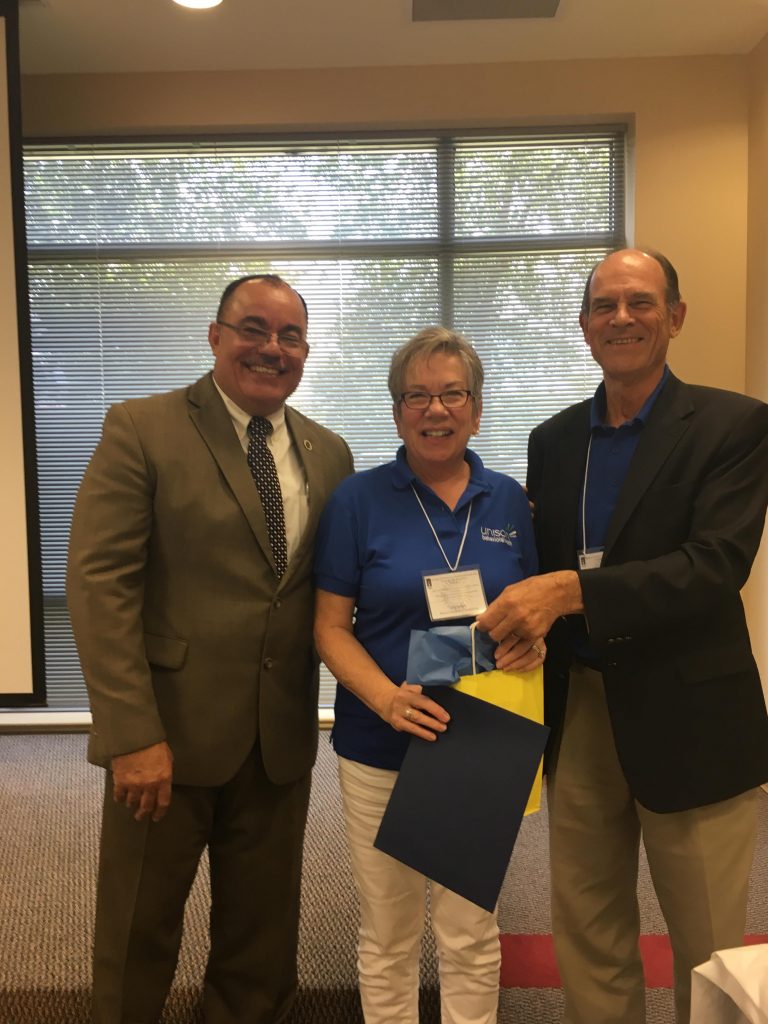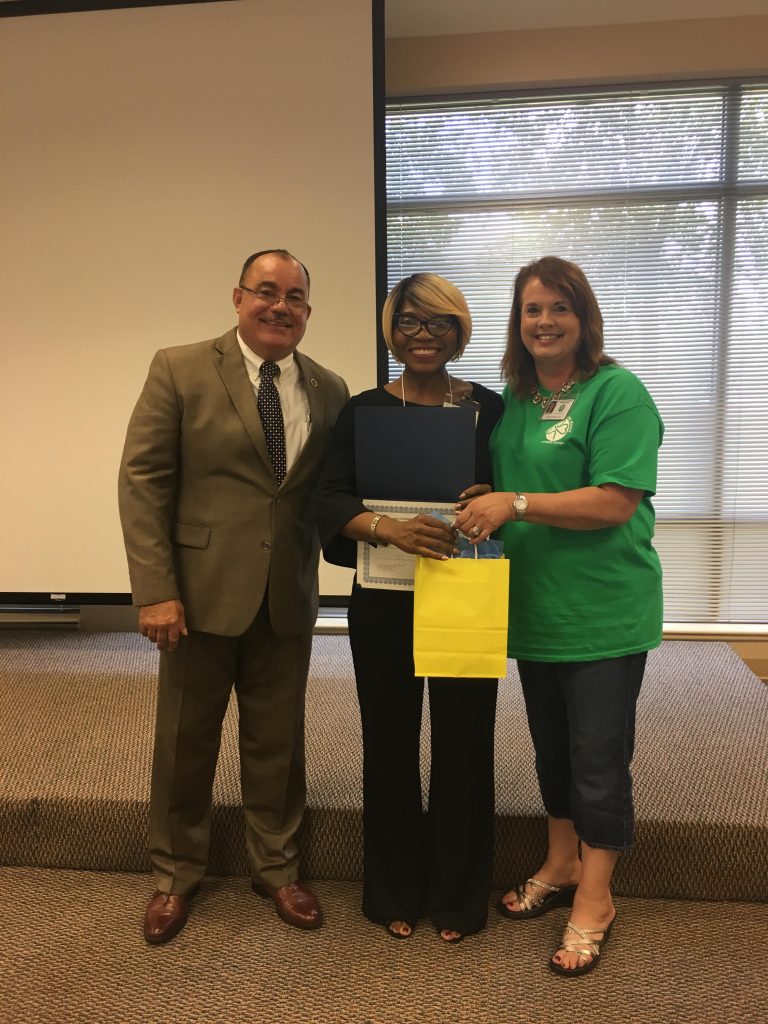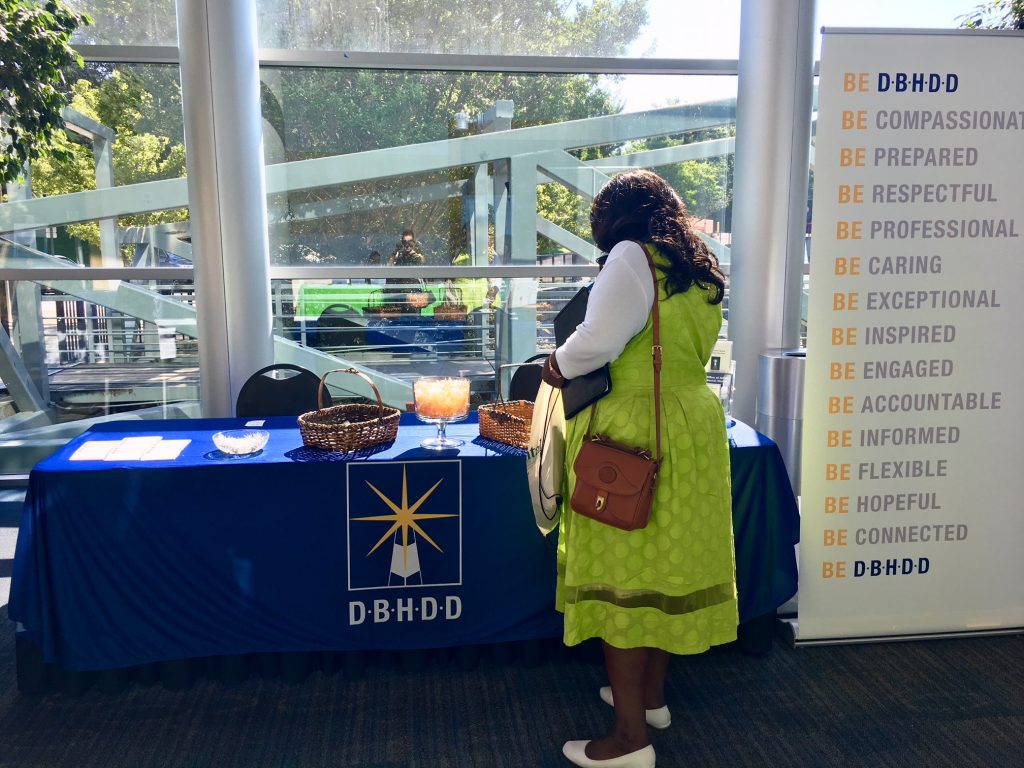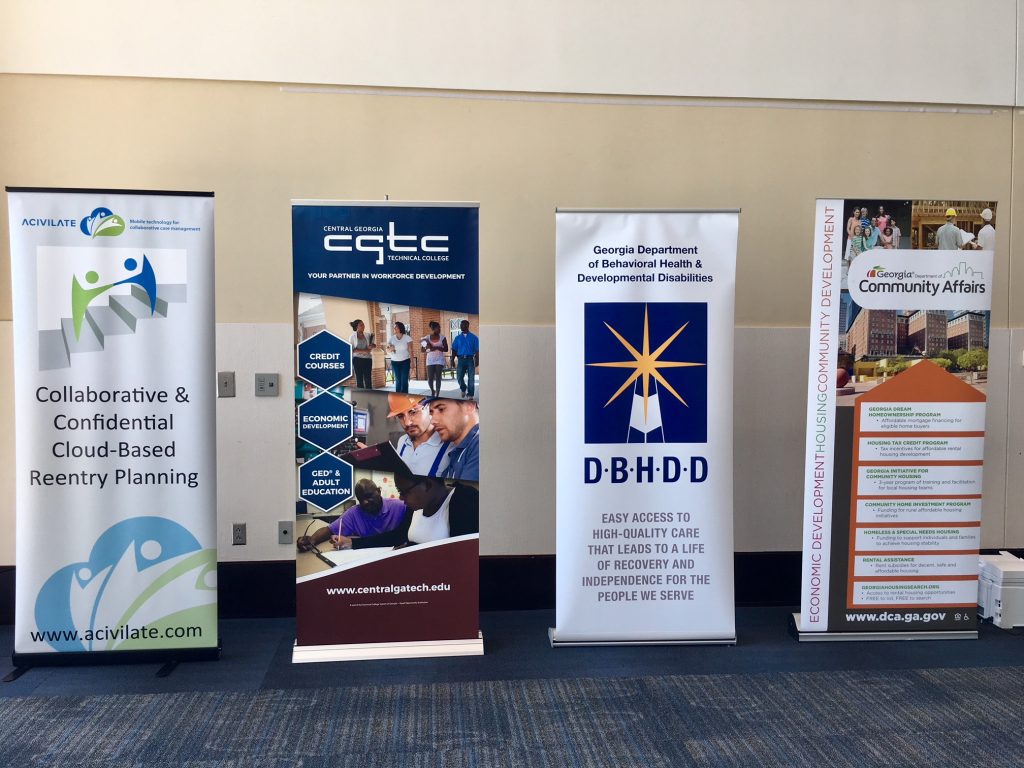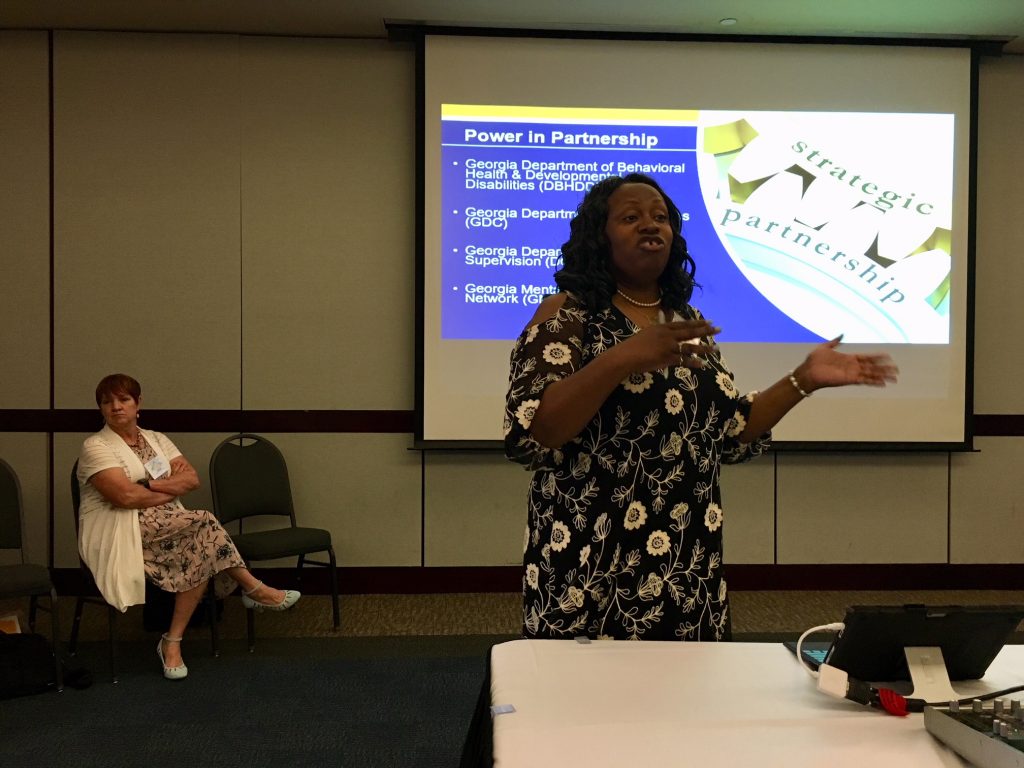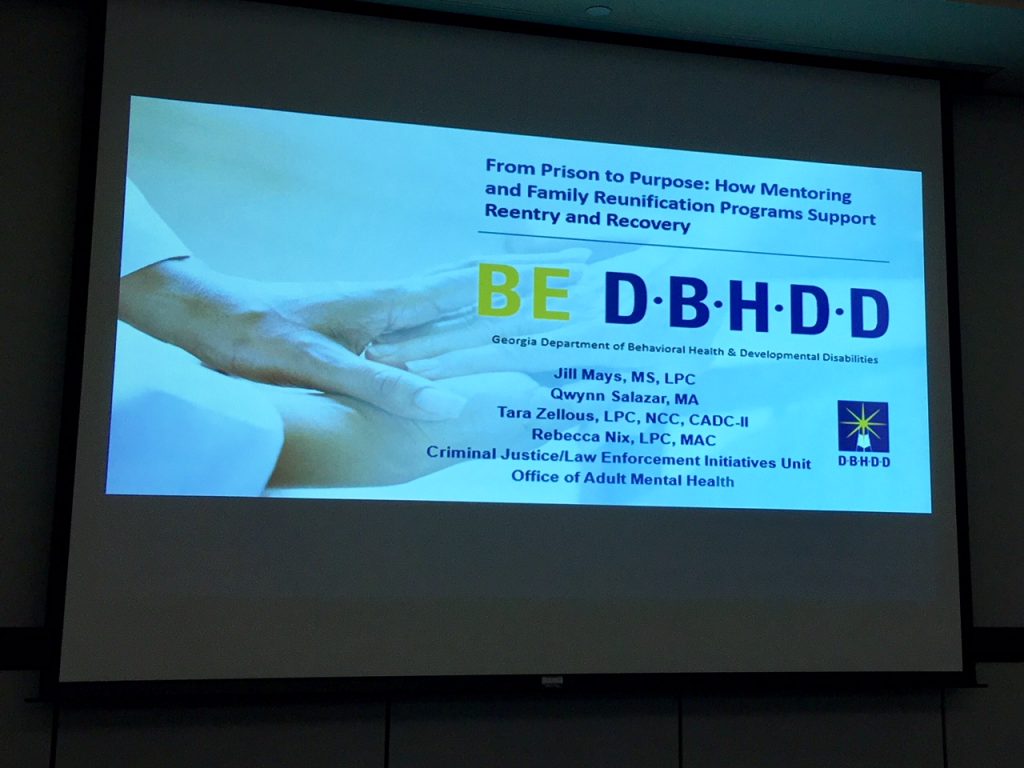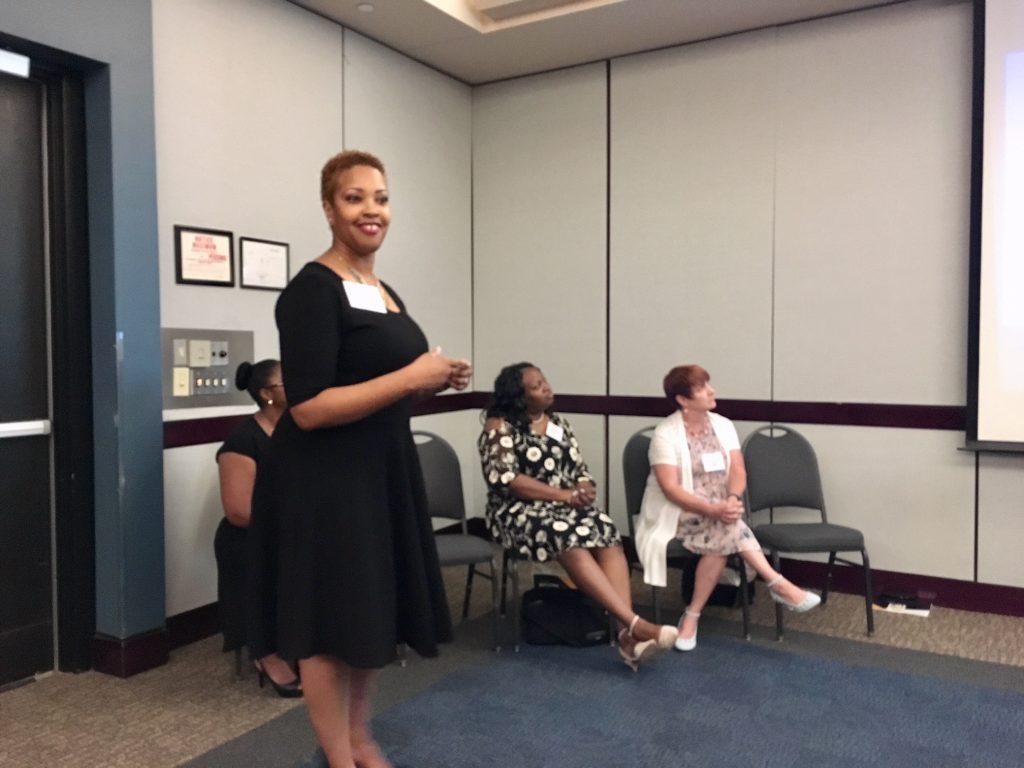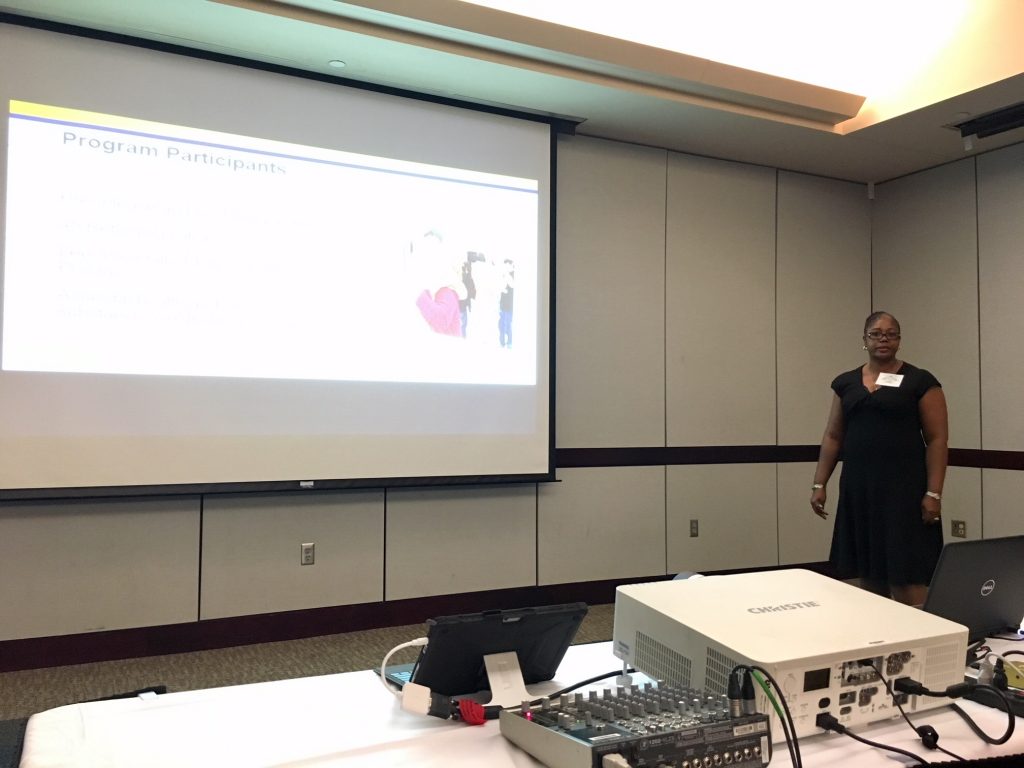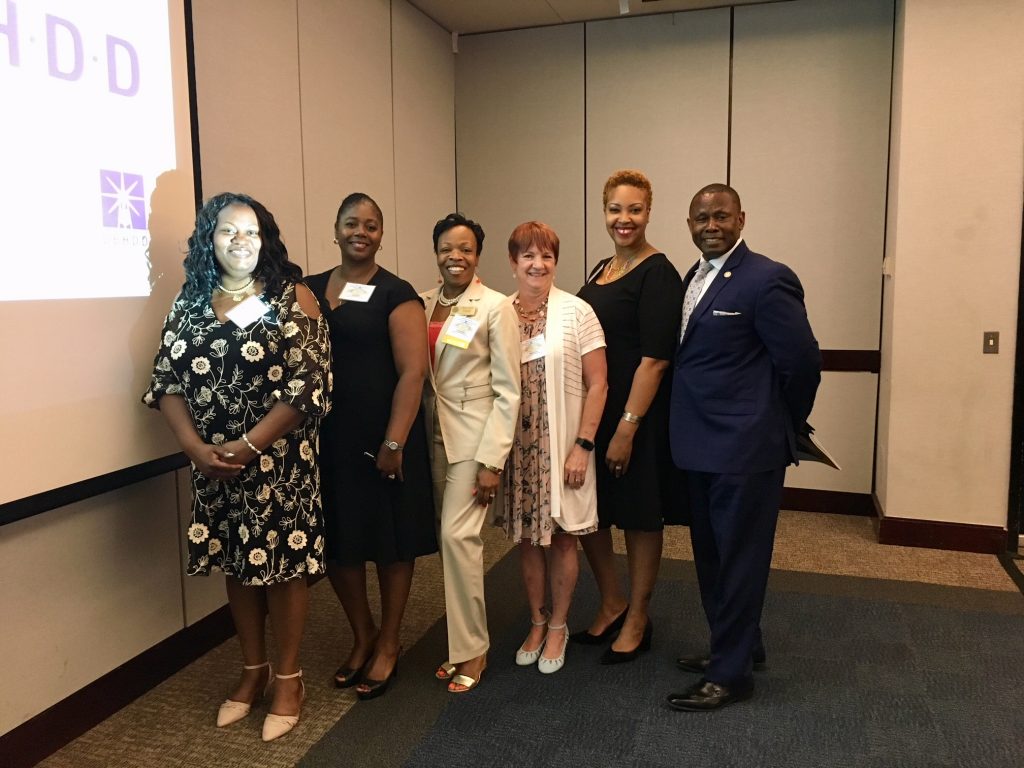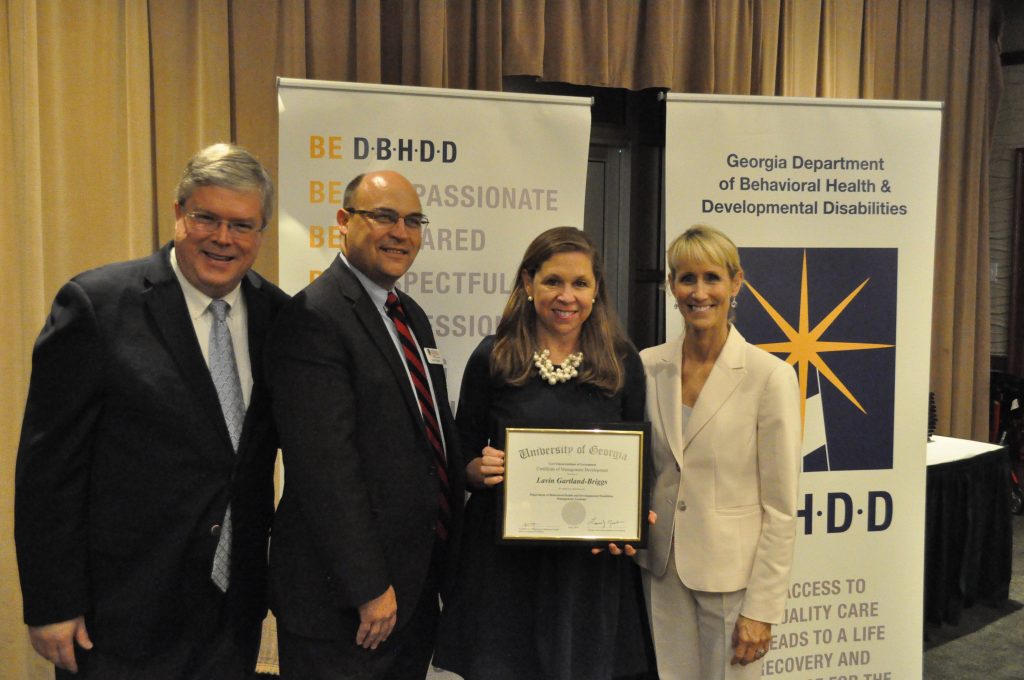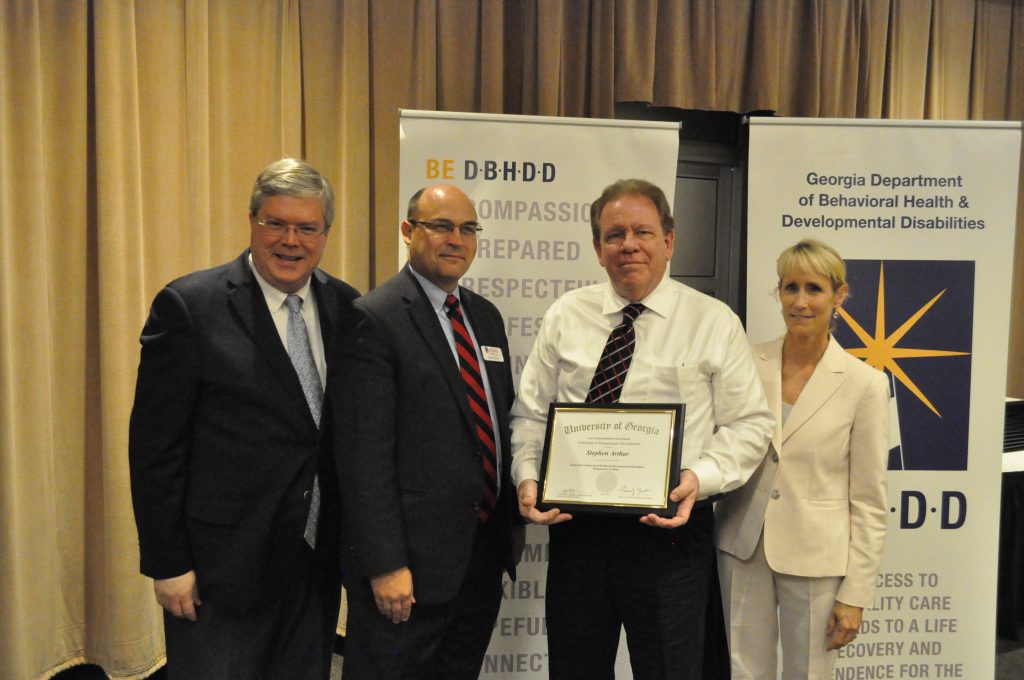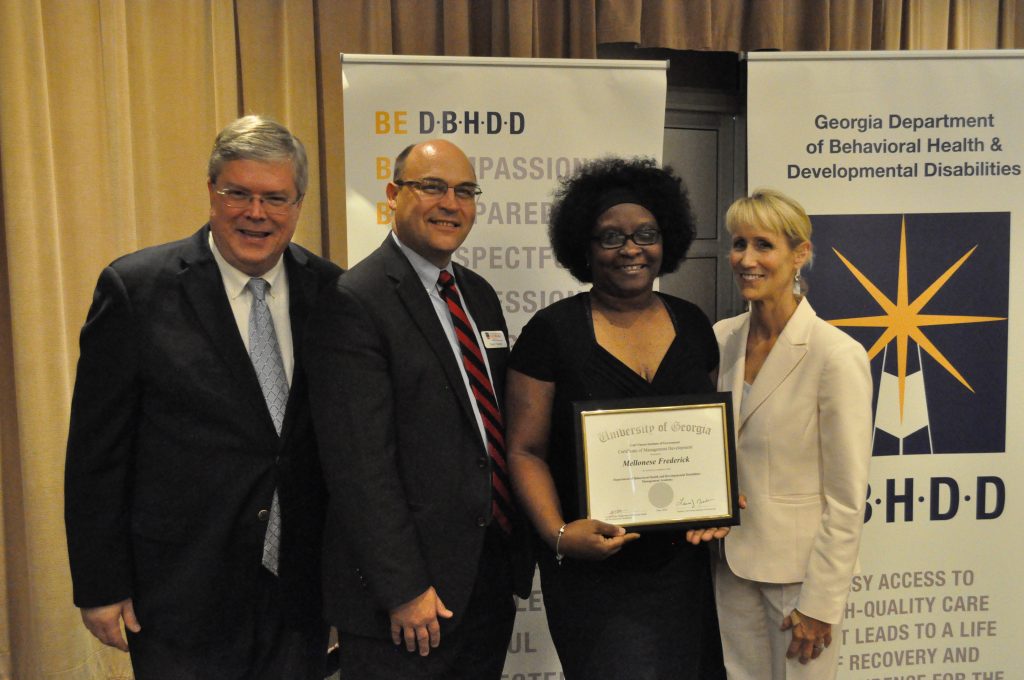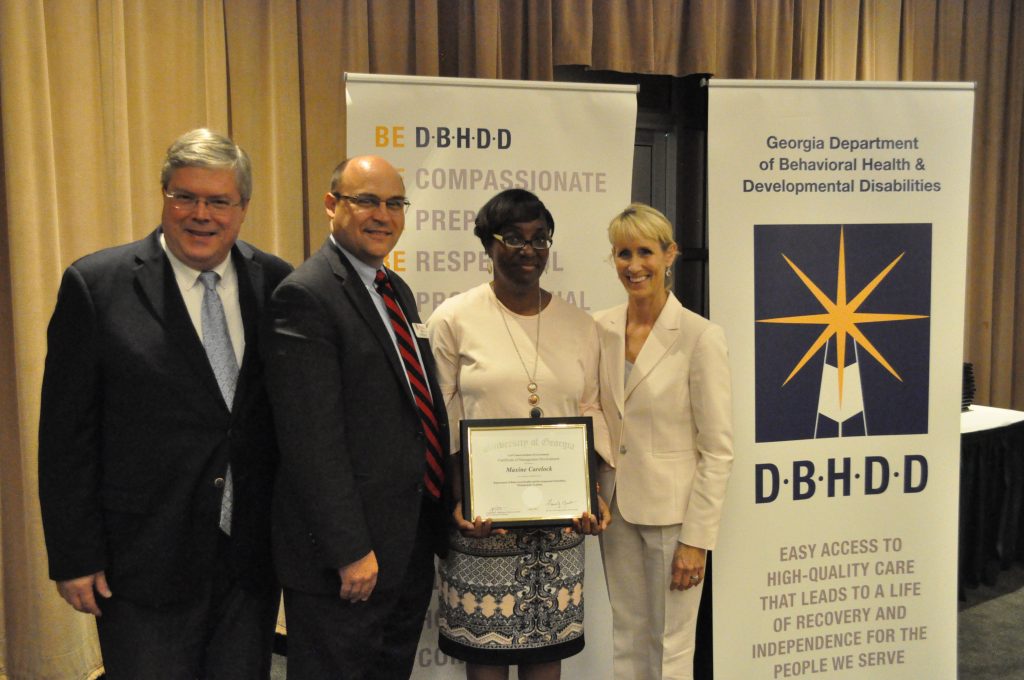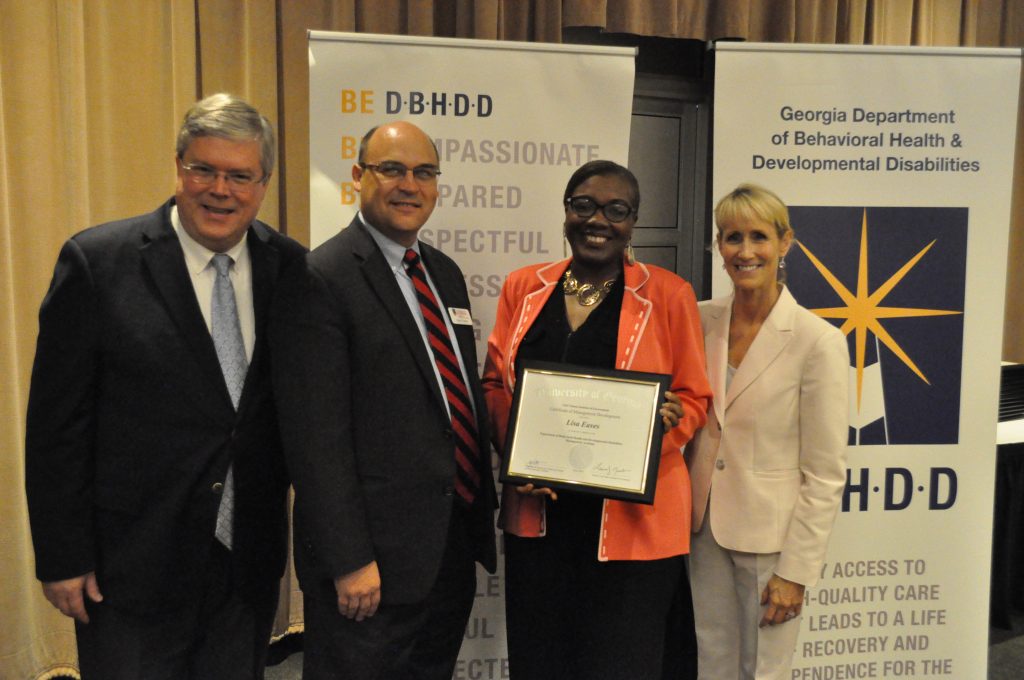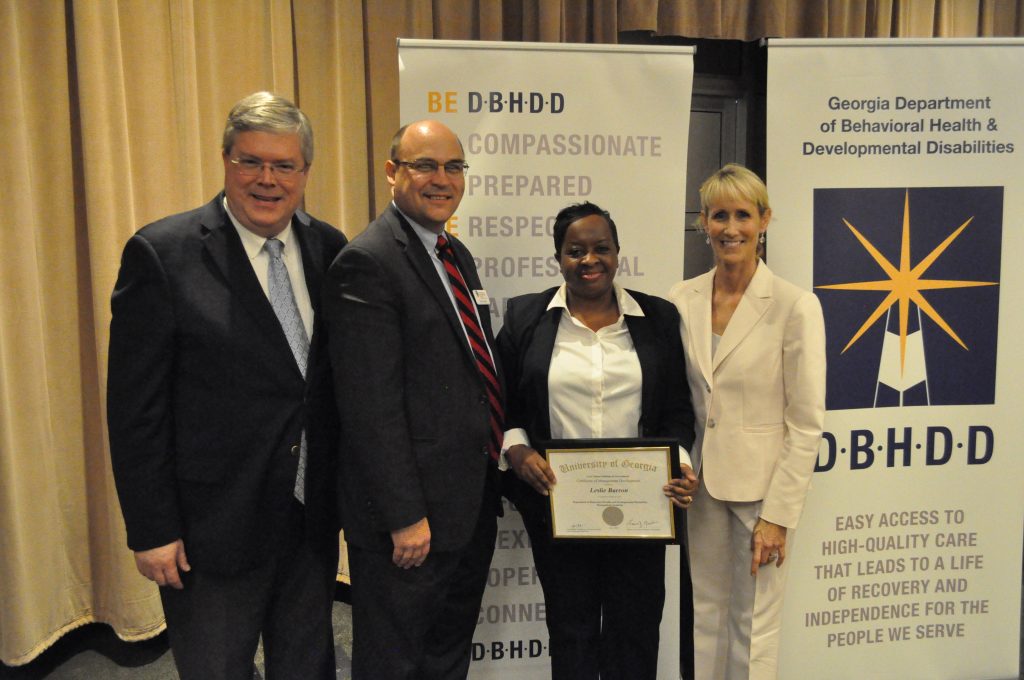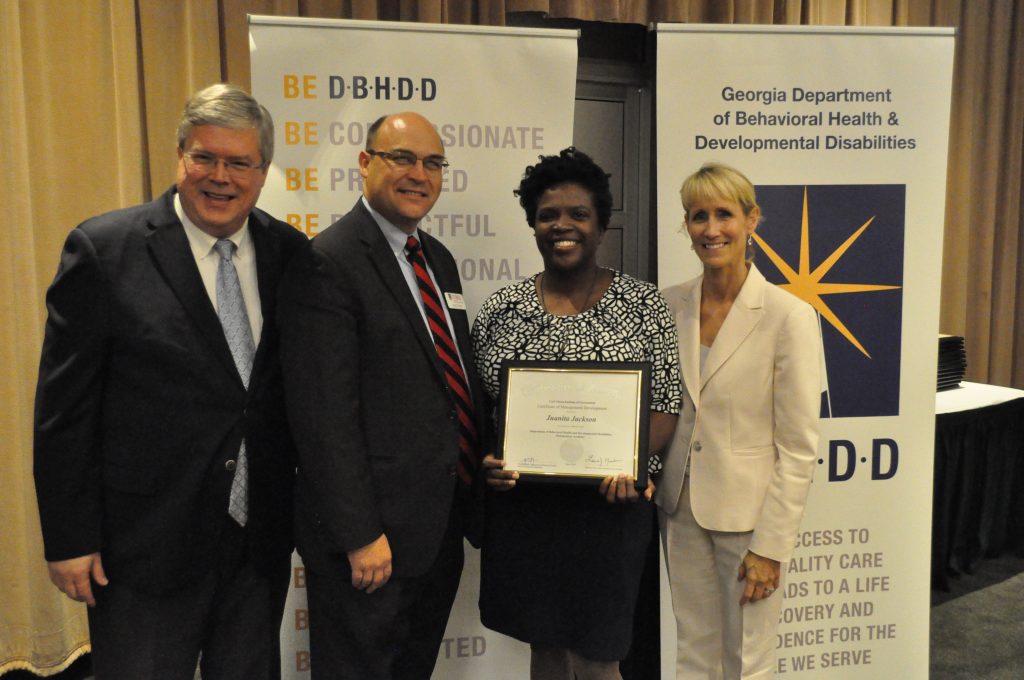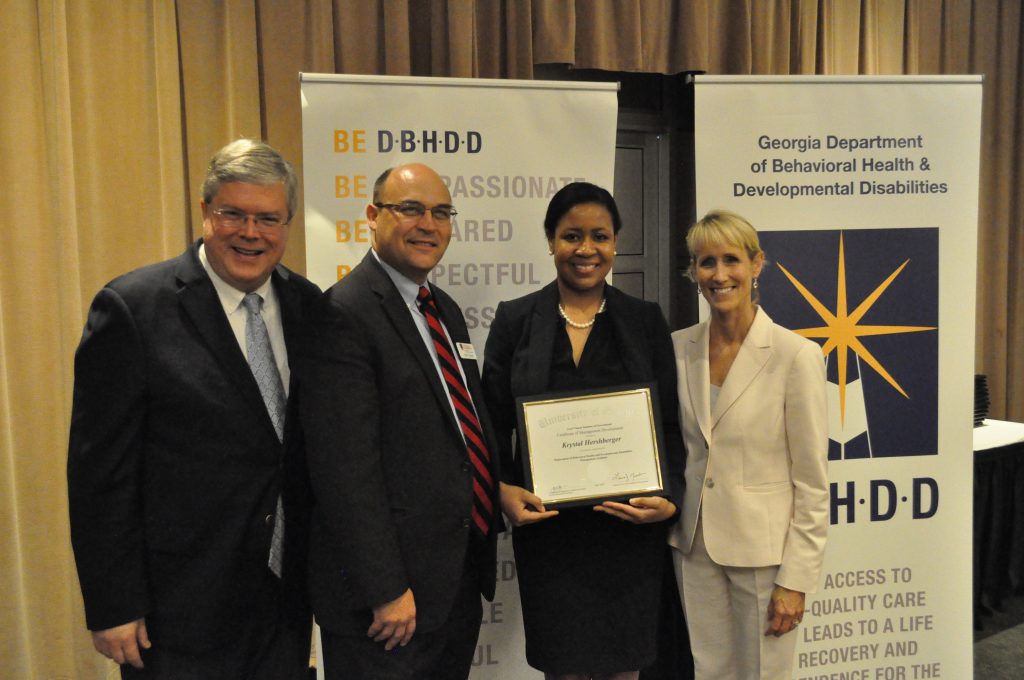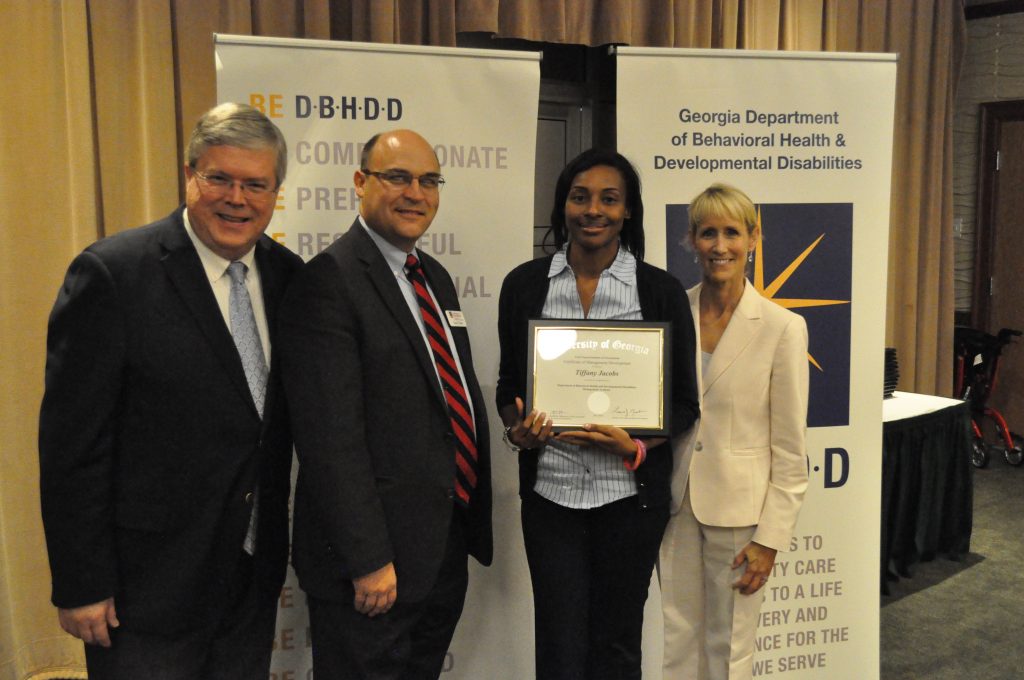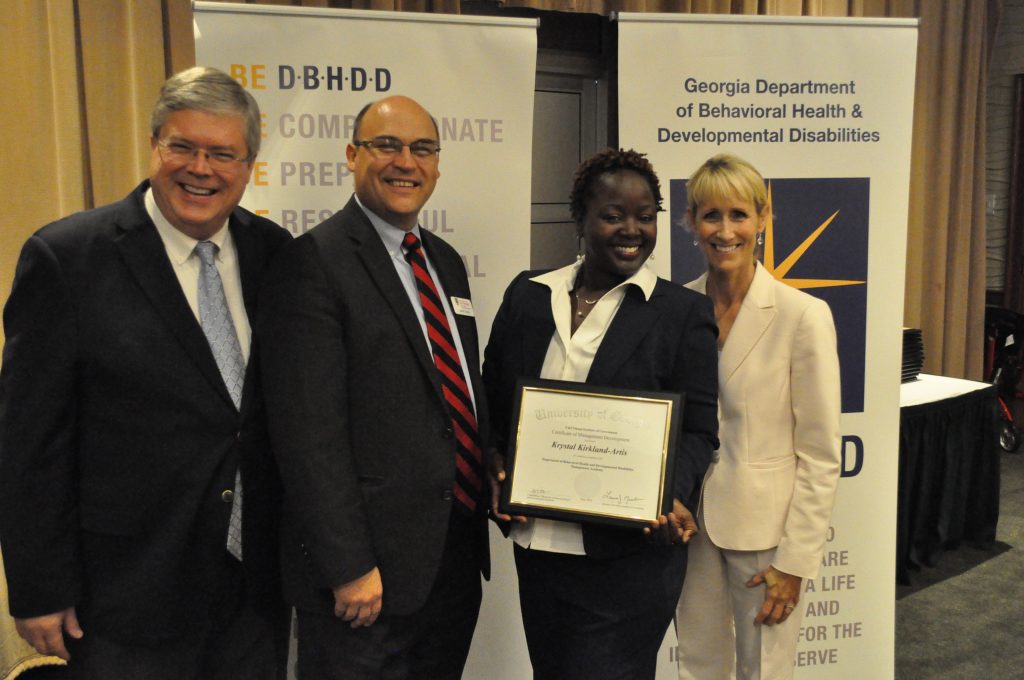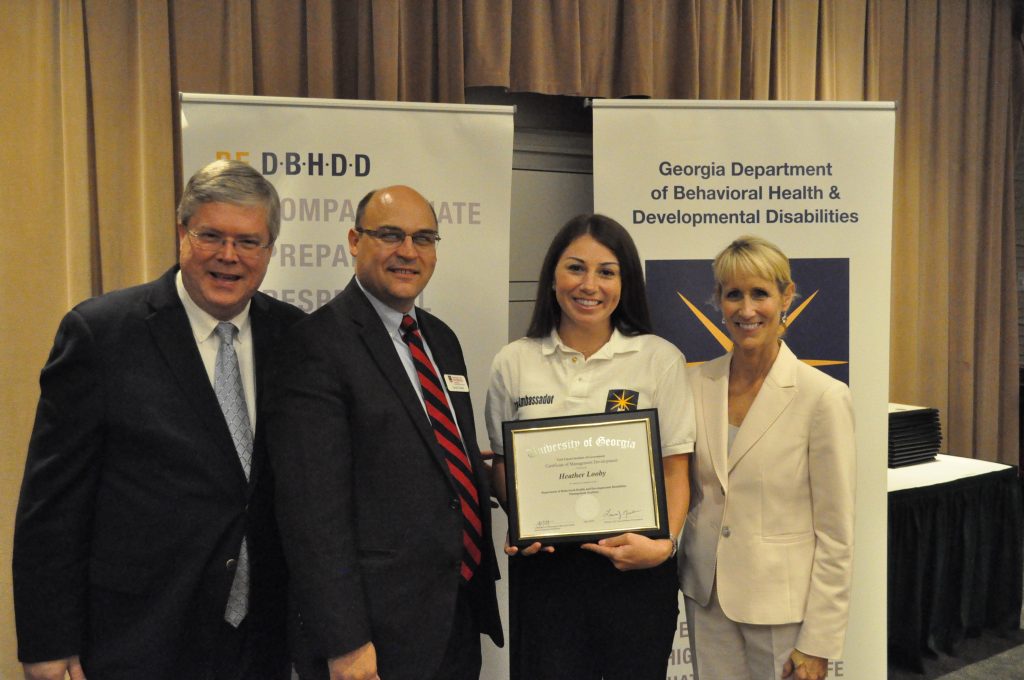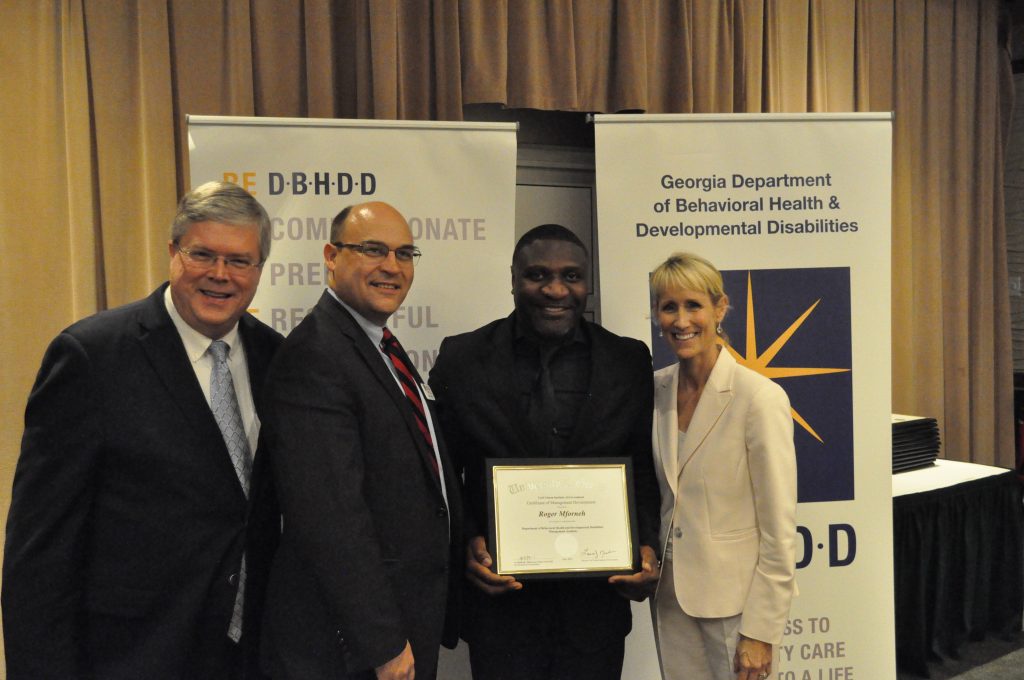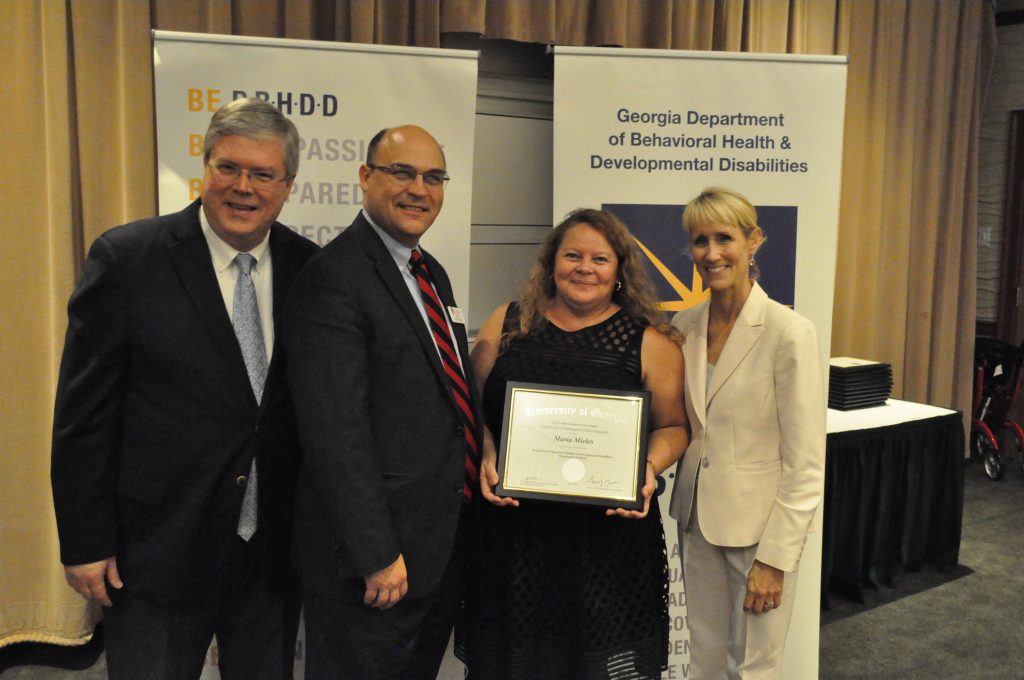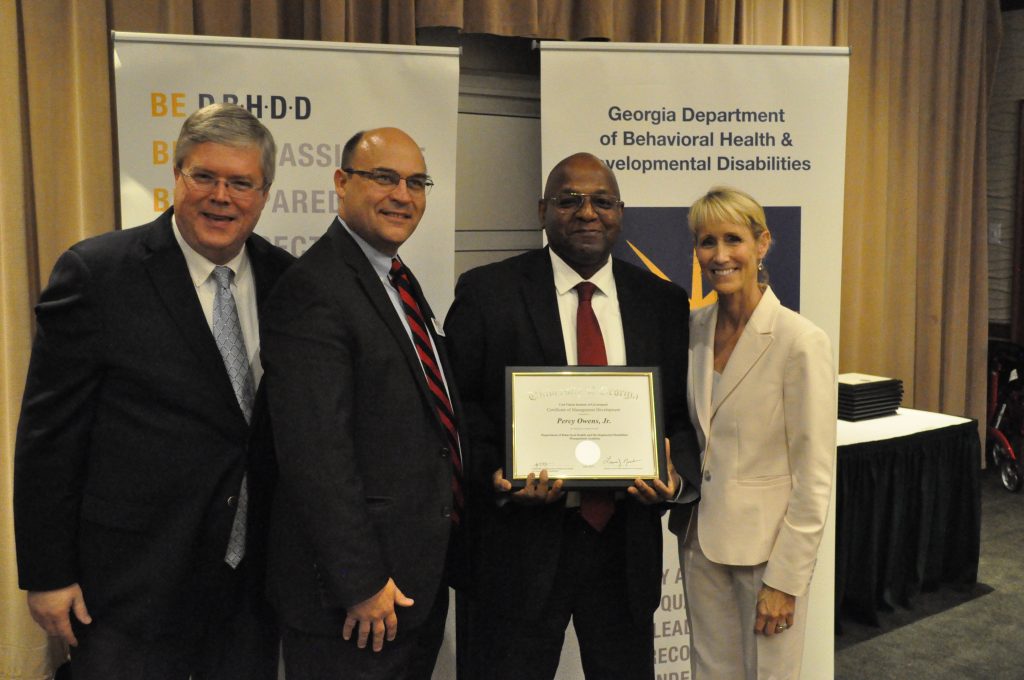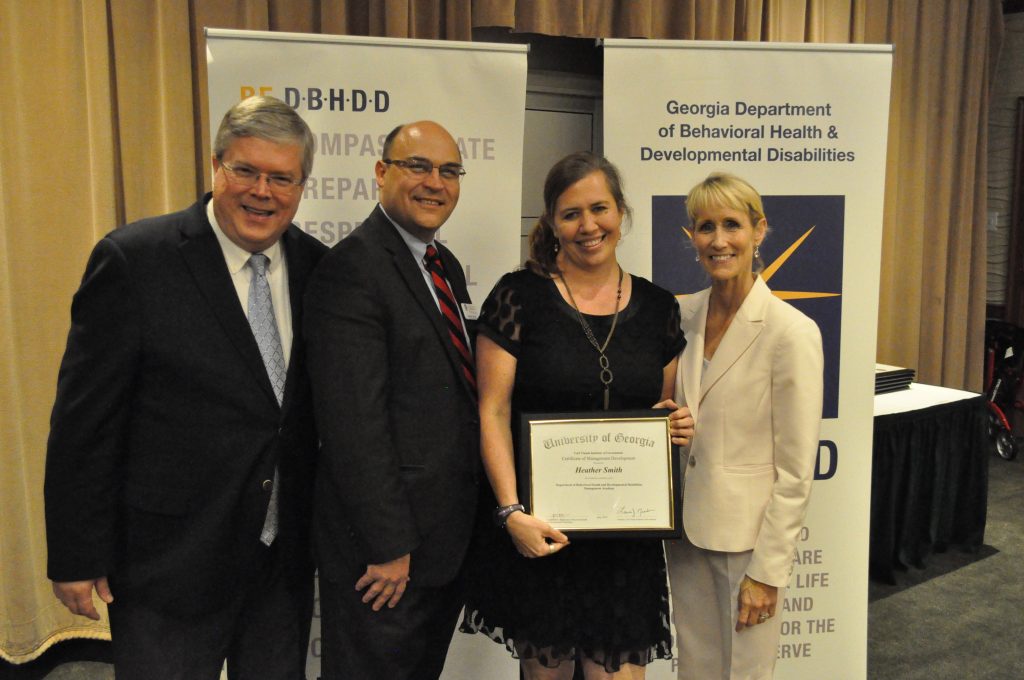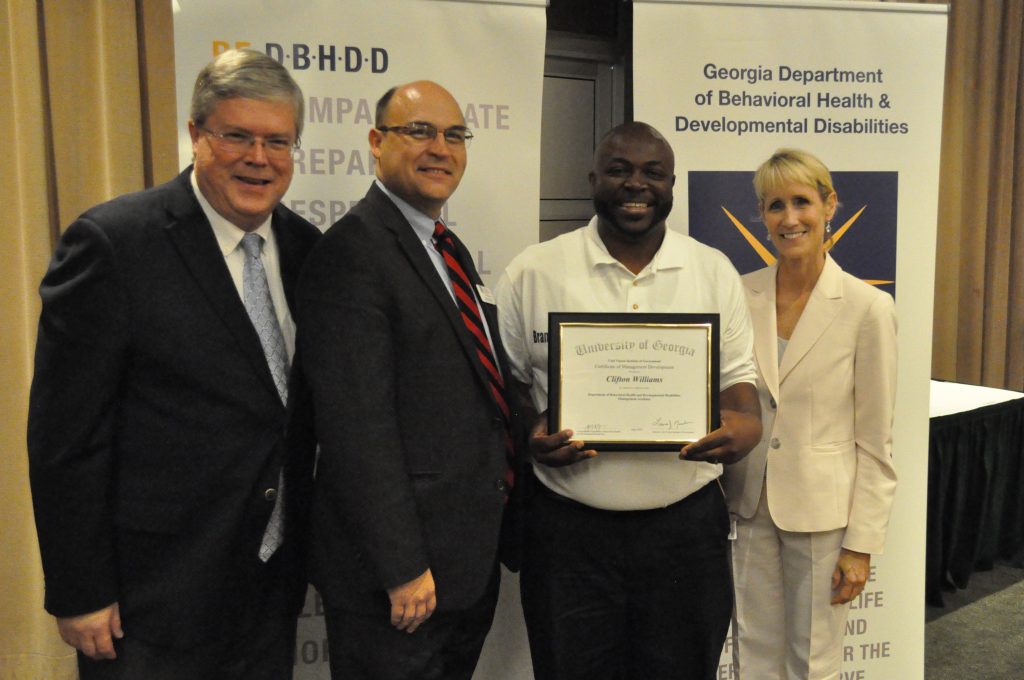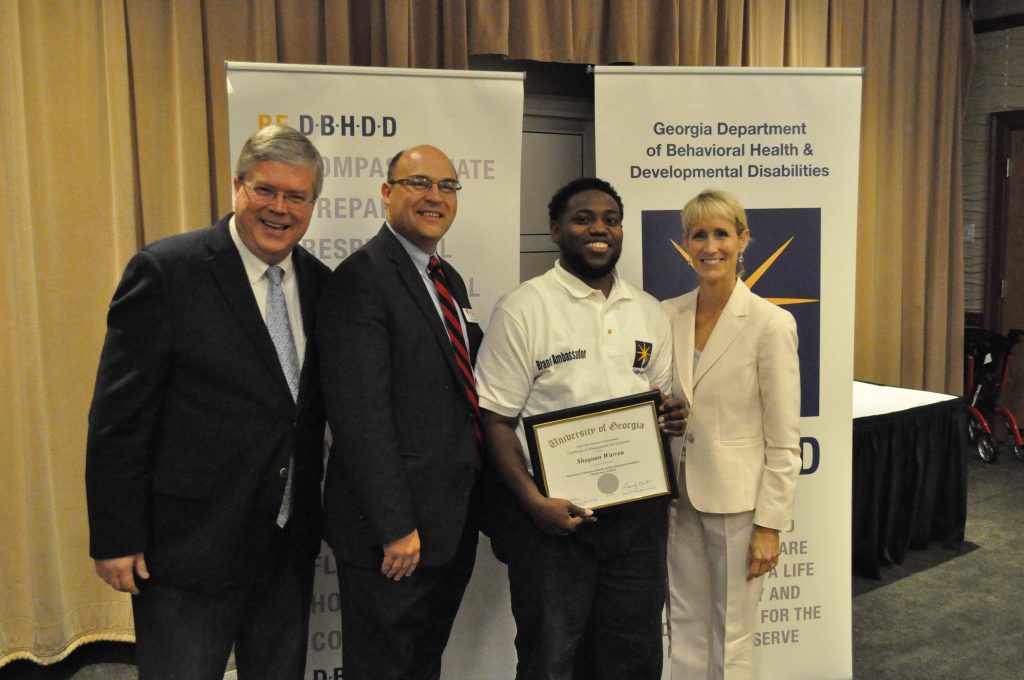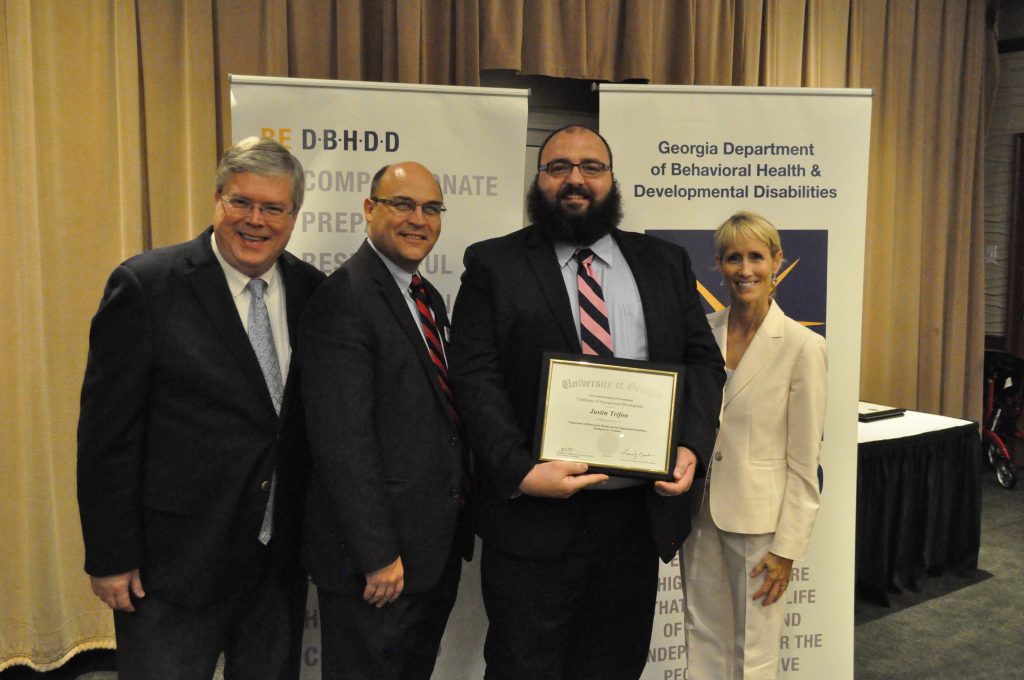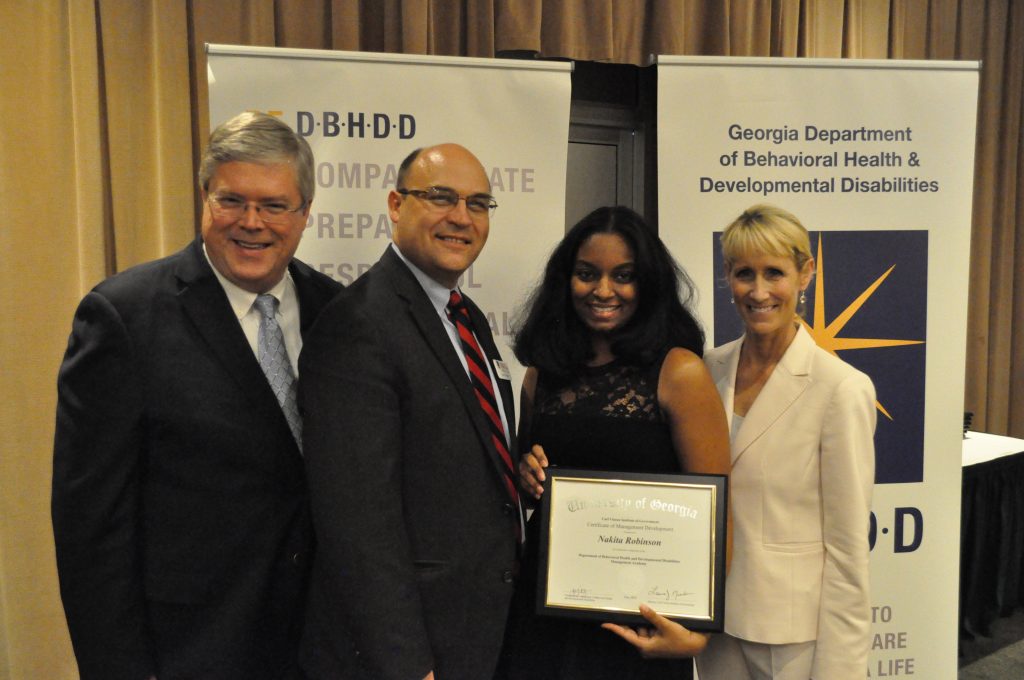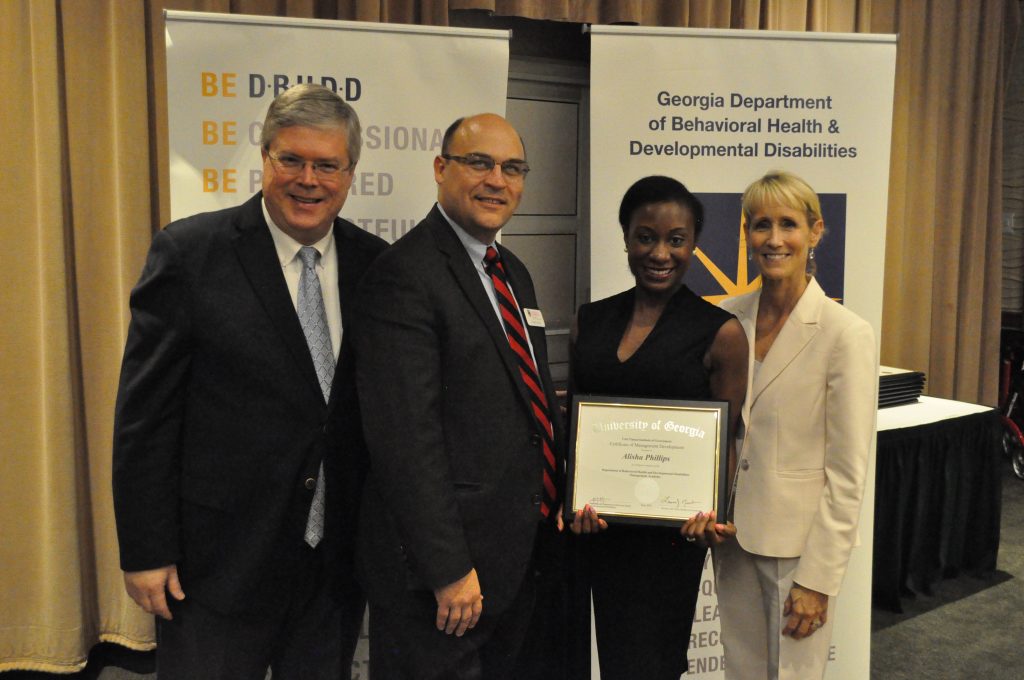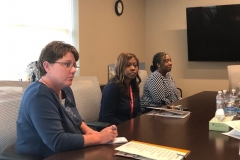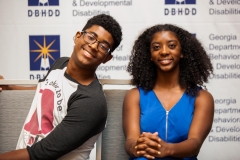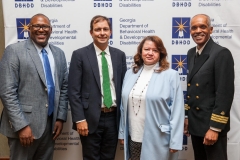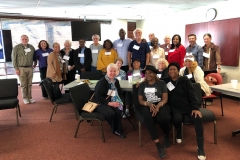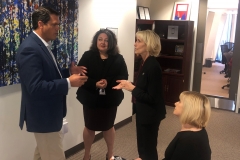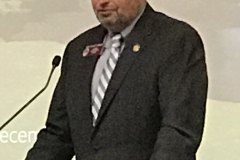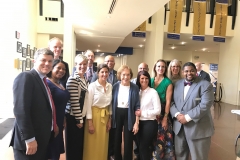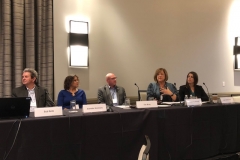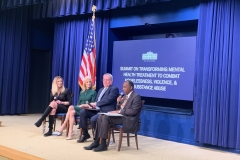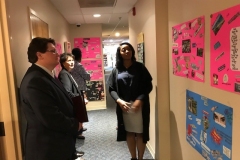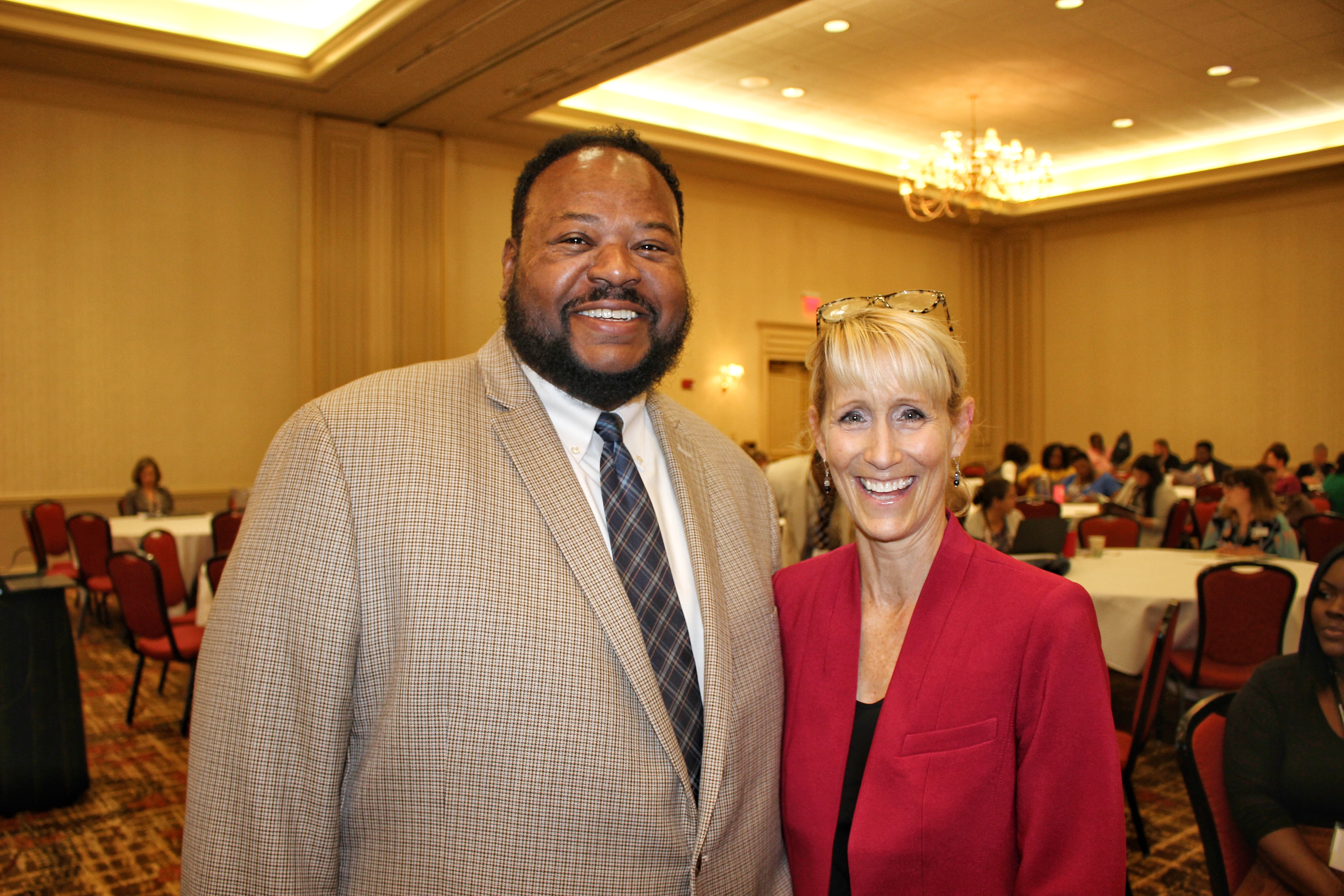
Travis Fretwell, Office of Behavioral Health Prevention, Director and Commissioner Judy Fitzgerald at Suicide Prevention Conference 2018 
Walker Tisdale, III, Suicide Prevention, Director speaking at Suicide Prevention Conference 2018 
Suicide Prevention Conference 2018 
Suicide Prevention Conference 2018 
Suicide Prevention Conference 2018 
Suicide Prevention Conference 2018 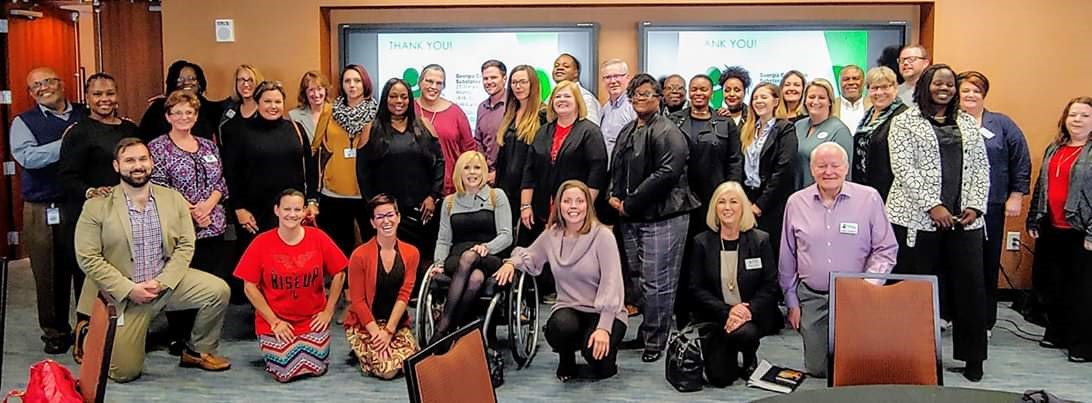
Kickoff for the 16 new Addiction Recovery Support Centers (ARSC) 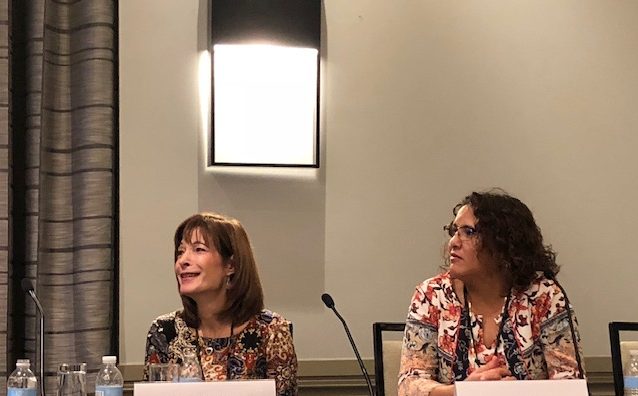
Karen Bailey, Ph. D., Forensic Services, Director at SSPHA/NASMHPD 2018 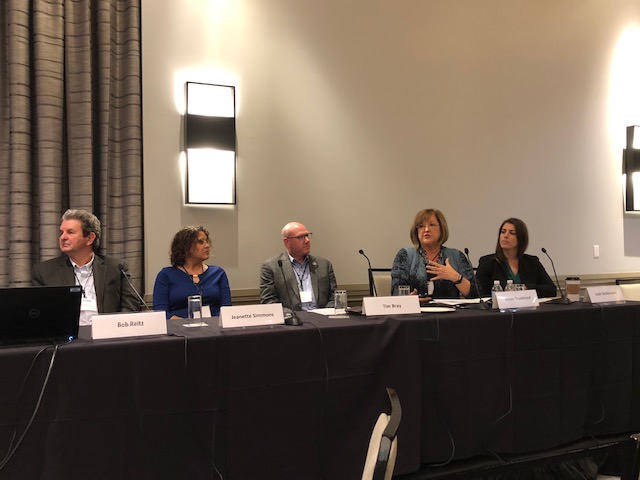
Susan Trueblood, Regional Hospital Administrator, Central State Hospital at SSPHA/NASMHPD 2018 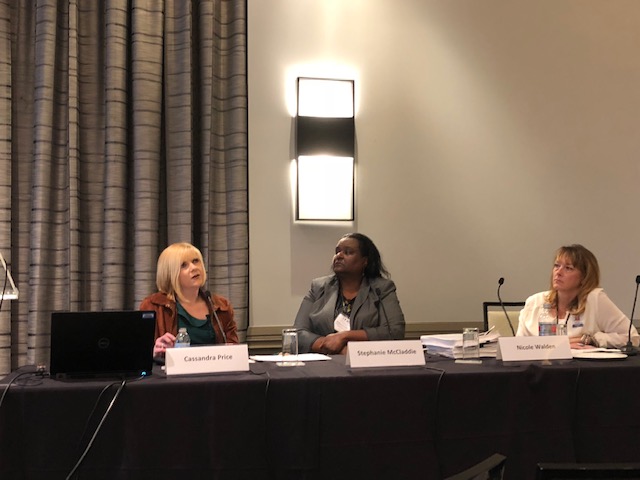
Cassandra Price, Office of Addictive Diseases, Director at SSPHA/NASMHPD 2018 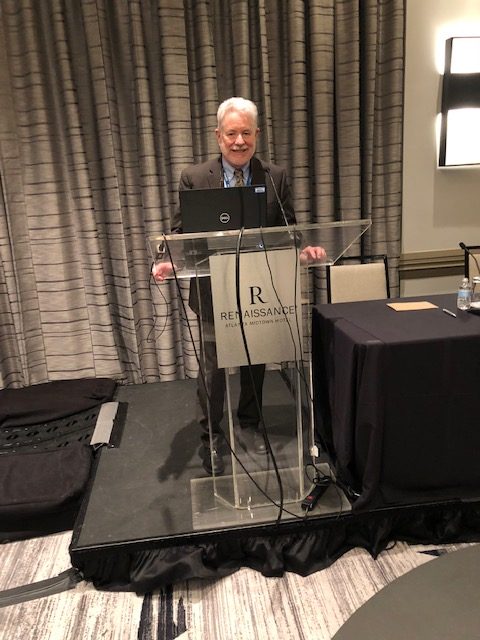
David Sofferin, Office of Public Affairs, Director at SSPHA/NASMHPD 2018 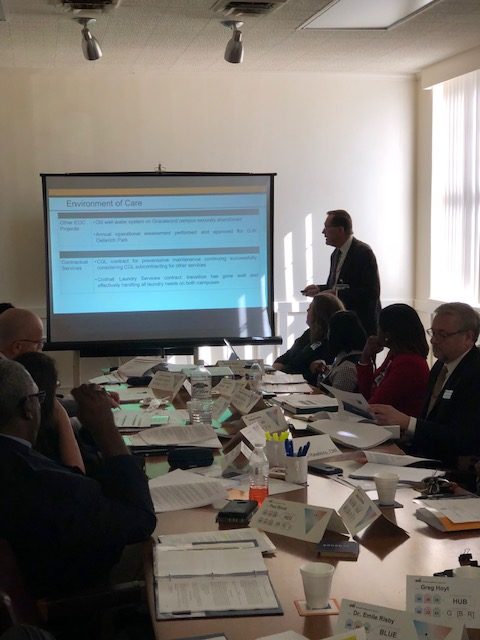
East Central Regional Hospital Governing Body Meeting 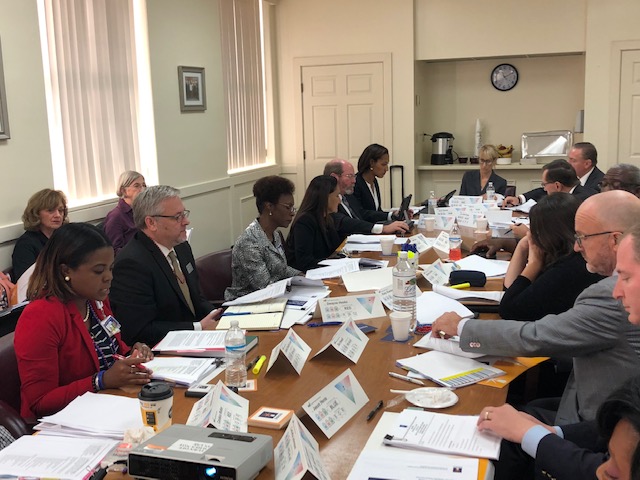
East Central Regional Hospital Governing Body Meeting 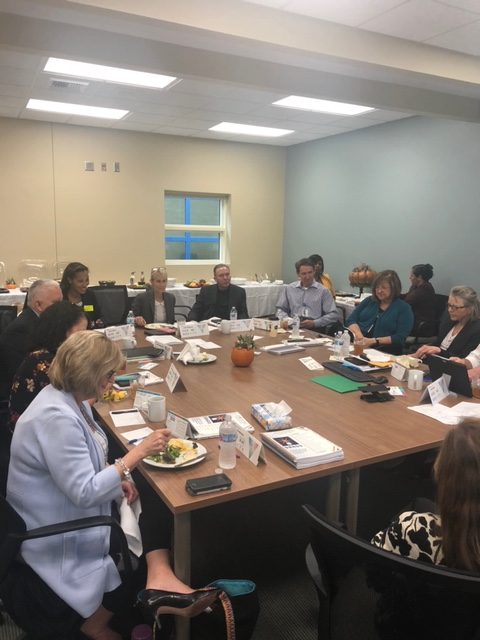
Central State Hospital Governing Body Meeting 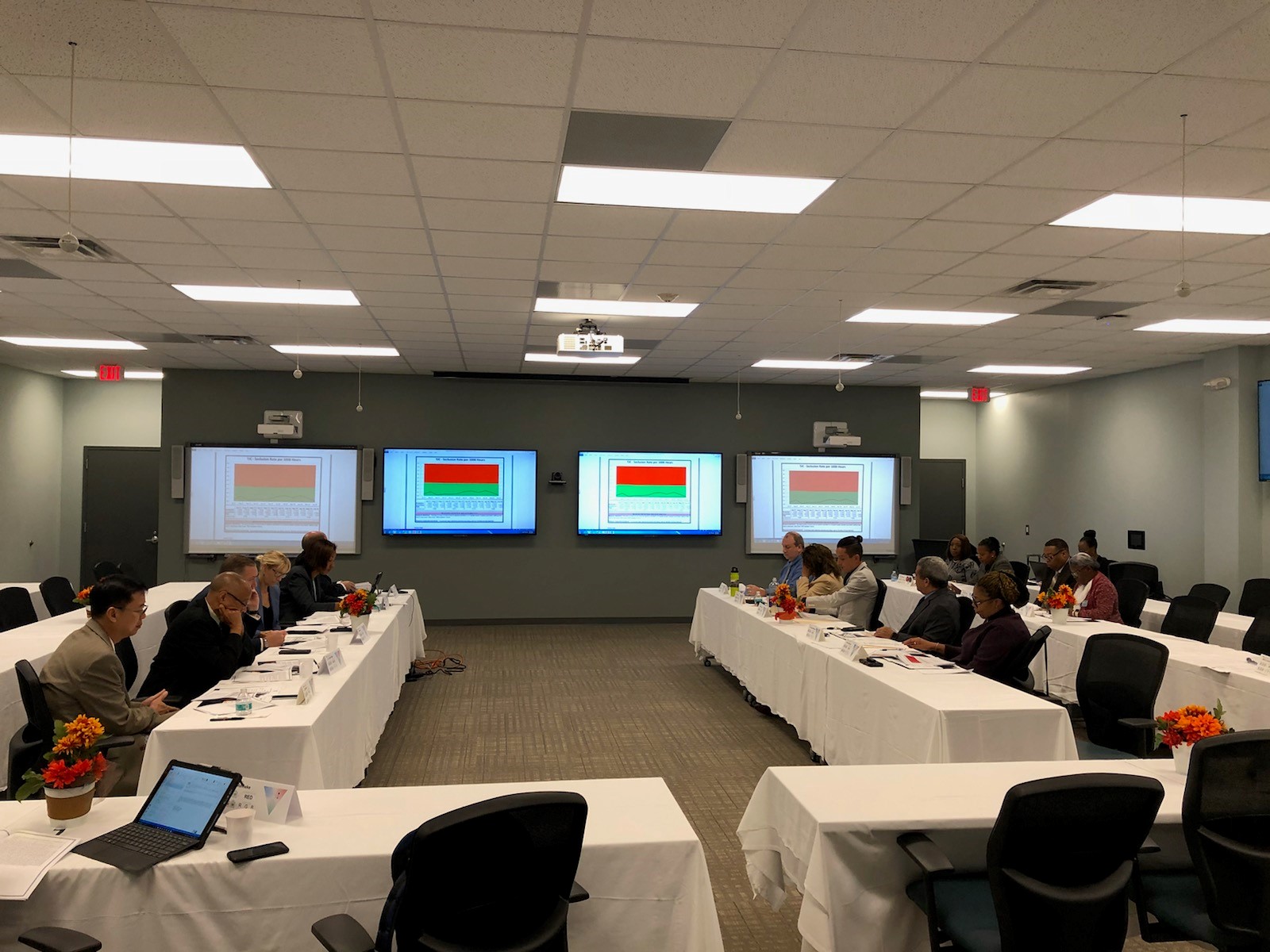
Georgia Regional Hospital Atlanta Governing Body Meeting
Suicide Prevention
Walker Tisdale, Director of Suicide Prevention, was interviewed on WJZA 101.1 FM’s show “Sunday Conversations” to bring awareness to the epidemic of suicide currently happening in Georgia and beyond. Tisdale also led the 8th Annual Georgia College and University Suicide Prevention Conference (pictured below) on September 24 and 25.
Region 4 Recovery Workshop
Highland River’s Women’s Outreach Program 20th Anniversary

OIT receives the Technology Innovation Showcase Award from GTA
Greetings! It’s finally Fall, even if it doesn’t feel like it outside. While it may still be a while before we have sweater weather, this is the season when we start reflecting on the past year and drawing closer to our family and friends. It’s also the time when we think more about giving. And it’s time once again for Georgia’s annual State Charitable Contributions Program (SCCP). This year’s theme is, Shaping Our Future Through Giving.
In addition to the honor of serving as your Commissioner, I am privileged to serve as Chair of the 2018 campaign. I have embraced this role with enthusiasm because of one known truth: our team at DBHDD is generous. Every day, I see you serving people and demonstrating kindness in both large and small ways. I am proud to work alongside you, and I want to extend my heartfelt appreciation for your tireless service to our state and the people who live here, our neighbors.
In my role, I am able to connect with thousands of public servants across Georgia and witness the difference each person makes. The work of DBHDD touches thousands of lives, and yet so many more in Georgia have unmet needs that can be supported by local and statewide charities.
As SCCP Chair, I am counting on our team. For DBHDD employees, who already do so much for the people we serve, this is an opportunity to extend our goodwill further throughout Georgia and the world. We know that Georgians count on us each day to deliver essential services in all corners of the state. Our work is challenging, and also rewarding, and it is easier to make progress when our economy is strong, and people are optimistic about the future.
So I ask you, please. Please consider contributing. Even a dollar per pay period can make a real difference to someone who needs it. Please join me in setting a goal of 100% participation by DBHDD employees. No amount is too small for you to be a part of this important effort.
If you are ready to make the commitment, simply click this link through October 31, and follow the prompts. You will see how easy it is to select organizations or causes of your choice, and let them know that you value their work with your giving. Your contribution matters.
Inspired by Robert T. Bennett, a small act of kindness can light a candle in the darkest moments of someone else’s life. Thank you for your support. I look forward to joining you as together we kindle the flame of generosity.
Sincerely,
Judy Fitzgerald
Commissioner of DBHDD and Chair of the 2018 State Charitable Contributions Program
Greetings, DBHDD supporters! September is Suicide Prevention Awareness Month, and this is an especially important issue to discuss right now. In fact, talking about suicide out loud—regularly, repeatedly, and thoughtfully—is part of the solution. I’ll say more about what YOU can do regardless of your age, skill level or background. But first, let’s remember what we ALL can do, and that is to offer a message of hope. Each life matters, and we know that help is available. We also know that treatment for issues related to mental health and addiction can save lives. Hope comes in the form of the Georgia Crisis and Access Line (GCAL). In every way possible, please share the number: 1-800-715-4225 to increase awareness of the support that is available 24/7 statewide.
Now let’s talk about what DBHDD is doing in response to the fact that suicide rates have increased at a disturbing rate across the country. Suicide is the second leading cause of death among individuals between ages of 10 and 34. Our alarm and concern must be grounded in an evidence-based, multi-tiered approach that reaches individuals, families, caregivers and communities, and uses public policy, education, prevention and intervention strategies, and community planning to confront this problem. Using research data to drive priority target populations and geographic areas, we facilitate suicide prevention coalitions that work with faith, business, and civic leaders alongside community service boards and other local providers to disseminate education and training and to promote access to GCAL and community-based services. If the tragedy of suicide occurs, our partners work to mitigate the risk of contagion by providing grief support, making physical contact for emotional respite, and most importantly, helping reduce the stigma of mourning the loss of a loved one by suicide.
Through a network of suicide prevention experts, DBHDD supports training and technical assistance to grow professional and organizational capacity building, so that providers can offer 21st century suicide prevention support; address the most complex cases of mental health and substance abuse disorders; and ensure that more Georgians who are at-risk for suicide behaviors are screened and connected to care.
So far in 2018, through our collective internal and partner efforts, approximately 600 providers and community members have been trained in two proven gatekeeper suicide trainings: Question, Persuade, and Refer (QPR) and Mental Health First Aid (MHFA). Additionally, DBHDD supports evidence-based and best practices to target suicide screening and interventions for vulnerable individuals, such as youth and young adults; people with specific mental health diagnoses, substance use disorder history, chronic health conditions; and those with prior documented attempts. A focused statewide effort includes collaborating on multiple levels in all six regions of the state, working with community service boards, the Georgia Department of Education, colleges/universities, civic organizations, law enforcement, public and private clinicians, community groups, suicide survivors, and many, many other stakeholders.
It’s important to understand that when it comes to suicide prevention – there is something YOU can do. If you are concerned about someone who may be considering suicide, remember these four action steps: ASK-LISTEN-STAY-HELP.
Ask openly and compassionately, ‘Are you thinking about suicide?’ Listen to the person without judgment; avoid trying to ‘fix it.’ Stay with the person if he or she is suicidal; keep him or her safe until help arrives. Help him or her find the right kind of help. Call the Georgia Crisis Access Line (GCAL) anytime at 1-800-715-4225. Together, we have the power to decrease the prevalence of suicide and reduce its devastating impact on families and communities in Georgia.
By now, you’ve probably heard me talking about our remarkable transformation story. You’ve heard me brag on our talented and dedicated team at 2 Peachtree, in our regional field offices, and our state hospitals, as well as in our network of community-based providers. If you were part of our system in 2009, you remember that Georgia’s public safety net was inconsistent, fragmented, underfunded, outdated, over-reliant on hospitals, and lacking capacity to serve people in the community. In a word, it was broken.
Today, after a decade of transformation, DBHDD is a consumer-focused, innovative, and responsive leader in behavioral health and intellectual and developmental disabilities, both in Georgia and across the nation. In my May column, I highlighted many changes to our community service delivery system, managed by our Divisions of Behavioral Health and Developmental Disabilities. Today, I want to talk about a less visible but no less significant piece of our transformation: our information technology system.
The health care environment of the future demands modern technology and a nimble workforce that can adopt new and evolving digital skills. Under the leadership of our Chief Information Officer Doug Engle, DBHDD has embraced a state-of-the-art approach to information technology. DBHDD’s Office of Information Technology (OIT) supports our 5,000 employees working in the state office, our six regional field offices, and our five hospitals. While you may not think about IT unless you have a problem with your computer, their work undergirds everything that we do.
In the last five years, our IT system has profoundly transformed. IT improvements are not just about new software for staff. They are directly leading to efficiencies and better care for the people we serve. You don’t need a technology background to understand how DBHDD’s many IT advancements are making it easier for us to do our jobs and to support easy access to high-quality care for everyone who is touched by our department.
Below are just a few of the advancements that are in progress or will be launched soon.
Security
- An enhanced cybersecurity policy protects the confidentiality, integrity, and availability of our systems, networks and data, and helps staff recover their business processes after computer or network security incidents.New cyber incident response teams provide a quick, effective, and orderly response to computer-related incidents, such as viruses, hackers, or the improper disclosure of confidential information.
Provider Data
- The Office of Provider Certification and Service Integrity under the Division of Accountability and Compliance now uses an integrated platform for collecting, tracking, and reporting provider assessments, as well as resolving any issues identified in the assessments. This platform makes the provider review process more efficient by automating reporting and consolidating data. It significantly reduces the amount of time spent on almost every step in the process. It also provides easy access to reports and analytics, helping us meet our goal of ensuring high-quality care across our entire provider network.
Clinical Oversight for High-Risk Individuals
- The Office of Health and Wellness’ Statewide Clinical Oversight Application is a web-based tool used to document and track events/incidents for high-risk individuals with intellectual and developmental disabilities (IDD) receiving Waiver services. It supports the timely, systematic, and comprehensive attention necessary to adequately resolve or address identified events/incidents with the goal of reducing morbidity and mortality risks. The tool enables:
- Increased visibility and accountability on all oversight processes statewide;
- Improved collaboration and communication among; and
- Data-driven decision making through centralized and standardized data collection.
IDD Service Review Technical Application (SRTA)
- The SRTA applications helps 30 evaluators track more than 200 health, wellness, and safety data elements of more than 400 high-risk individuals with intellectual and developmental disabilities who have been transferred from our hospitals to a community residential setting.
Forensic Evaluation Logistix
- The Office of Forensic Services has been working closely with OIT to develop a new web-based tool to document and manage court-ordered competency evaluations and the assignment of the evaluations. The Forensic Evaluation Logistix (FELIX) application will facilitate collaborative and timely management of competency evaluations. This is being achieved through increased visibility of all court-ordered competency evaluations and annual evaluations within a single application. Through the consolidation of forensic evaluation data collection, there will be improved dashboards, reporting, and oversight. In return, the Office of Forensic Services will have an application that enables data-driven decision making and accountability. The FELIX application is planned to be released this month.
Customer Service
- The new work request management tool uses a ticketing system to track and monitor computer- and technology-related issues for employees, so that they can be resolved in an organized and timely manner. It also provides metrics to allow OIT to see where and how frequently various issues occur. DBHDD staff can submit work requests through the OIT homepage in SharePoint.
- OIT developed an application to identify and track DBHDD hardware assets and locate them quickly if lost or stolen. This helps ensure that protected health information and other confidential material is secure. The application also enables more efficient updates. The use of this application has reduced monthly billing costs by $10,000, and led to a 17 percent decrease in assets not in use and a 65 percent decrease in reserve assets.
While the benefits of DBHDD’s IT enhancements are felt across our department, many efforts been targeted around helping our hospitals improve patient care.
Infrastructure
- A new fiber network and other enhancements, including the addition of campus-wide wireless Internet, have been piloted at Georgia Regional Hospital-Atlanta with future expansion planned for other hospitals.
- OIT continues to work with our business partners to provide refreshed and up-to-date laptops, tablets, and desktop computers across our agency.
Application Development and Support
- OIT has developed, and continues to develop or enhance, several hospital-based applications, including Avatar, our electronic health records system. Future Avatar modules will be able to quickly and securely exchange referrals with external provider organizations; send and receive clinical data, lab results, and treatment plans; and incorporate external data directly into individuals’ medical charts.
Patient Care Enablement Project
- This initiative improves care by fostering an environment in which staff are informed, connected, and accountable by creating standardized workflows and training modules; communication and on-the-job skill development; and the ability to measure the adoption rate of these new features by staff.
Hospital and Enterprise Reporting
- An enhanced data reporting system provides reliable reports via a simple tool that allows fast and easy access to information, as well as the ability to monitor individuals (including those at high risk), pinpoint data input and timeliness issues, and collect relevant information for decision making. The system also standardizes required data collection across our hospitals.
I am so proud of our OIT staff and the many technological enhancements they have brought across our system. While these efforts certainly make it easier for staff to accomplish daily work, the real impact is on our ability to provide more efficient and responsive care to the people we serve.
DBHDD on the Move – August 2018
Hello and happy summer! For many, July holds holiday and vacation fun amidst the heat of summer in the South. At DBHDD, July is a time of transition, with the closeout of one fiscal year (FY 2018) and the start of the next one (FY 2019), while planning for the following year (FY 2020). We kick off FY 2019 with grateful acknowledgment of Governor Deal’s Commission on Children’s Mental Health, and the support from the General Assembly, which invested more than $20 million dollars in priority services and supports to address the behavioral health needs of Georgia’s youth and families.
Our system-wide work continues with great momentum, but there is one area of concern that I would like to highlight: DBHDD’s role in Georgia’s response to the opioid epidemic. Recurring headlines and your own family and community experiences may have you wondering how our state is responding. First, the facts: In 2014, the Substance Abuse and Mental Health Services Administration (SAMHSA) estimated that more than 2.5 million Americans struggled with addiction to prescription pain medication or heroin. The Centers for Disease Control and Prevention (CDC) cited a four-fold increase in opioid-related overdose deaths since 1999, and in Georgia, the rate more-than-tripled between 2006 and 2015.
I want to assure you that Georgia is tackling the epidemic head-on, and DBHDD is on the front line. As the state opioid authority, DBHDD is responsible for the prevention, treatment, and recovery elements of Georgia’s statewide response. In 2017, we received SAMHSA’s two-year State Targeted Response (STR) to the Opioid Crisis grant ($11.8 million per year). At the end of the first year, we have made important enhancements in each area of responsibility.
Prevention
DBHDD’s Office of Behavioral Health Prevention has focused on three initiatives:
- Training in naloxone administration and distribution of naloxone kits for 312 first responders and 3,255 citizens, which resulted in 435 self-reported overdose reversals;
- Two new public service announcements (PSA) about Georgia’s Good Samaritan law and naloxone availability, which have been played in more than 100 movie theatres statewide; and
- Engaging four providers to implement SAMHSA’s Strategic Prevention Framework (SPF) model in regions 2, 3, 5, and 6.
Treatment
The Office of Addictive Diseases contracted with nine providers for treatment – including Medication-Assisted Treatment (MAT) – of uninsured and underinsured Georgians who have opioid use disorders. Through this initiative, 450 individuals have received treatment.
Recovery
Three recovery initiatives have been added through the grant:
- A peer warm line to support people who have an opioid use disorder by connecting them with individuals in recovery who have been through similar experiences;
- Recovery coaching in two hospital emergency departments; and
- Education for recovery residences to align with the various pathways to recovery.
In the second year of the grant, which began May 1, 2018, the Prevention Office will double naloxone distribution to first responders and will release two additional PSAs that promote self-advocacy and safe storage and disposal of prescription drugs. It will also continue to fund SPF providers. The Office of Addictive Diseases will continue funding programs for MAT services and add new providers in regions 1, 3, and 6 to address the treatment need. Recovery initiatives will continue with the addition of recovery coaches in two additional hospital emergency departments and funding of three recovery community organizations in regions 2, 4, and 6 to provide support to those seeking recovery.
The opioid epidemic is multi-faceted and requires extensive collaboration. DBHDD has many great partners in this venture. We are working closely with the Georgia Department of Public Health to develop Georgia’s Opioid Response Strategic Plan.
We also participated in the launch of a Statewide Opioid Taskforce, convened by Attorney General Carr in October 2017 to bring together key stakeholders. Following the initial meeting, the Attorney General’s Office, DBHDD, the Georgia Department of Community Health (DCH), and DPH met to discuss strategies for addressing the growing opioid crisis. To date, over 200 people from more than 50 organizations have participated in a series of meetings to inform the strategic plan by identifying key goals, objectives, and outcomes in the following areas:
- Prevention Education
- Maternal Substance Use
- Data and Surveillance
- Prescription Drug Monitoring Program (PDMP)
- Treatment and Recovery
- Control and Enforcement
This work will result in the publication of a statewide plan that ensures accountability and transparency in the work ahead. As an essential enhancement to our efforts to address the opioid epidemic, DBHDD received $4 million in new state funding to support statewide implementation of Addiction Recovery Support Centers. Led by peers, the centers offer non-clinical activities that engage, educate, and support individuals and families to make the life changes necessary for to experience recovery. There is growing evidence of the need for a continuum of care that offers support and assistance well beyond the bounds of treatment.
There is hardly a family in Georgia that is not touched by addiction. Even as we battle at the cutting edge of treatment and services in the opioid crisis, we know that the bottom line is that addiction is the fundamental issue to be addressed. Abuse of alcohol, cocaine, and methamphetamines still represent significant challenges in our state. DBHDD – along with our providers and our state, federal, and community partners – is committed to education, prevention, early intervention, and evidence-based treatment. We engage in this work grounded in the belief that recovery is possible for each and every Georgian.
DBHDD On The Move – June 2018
